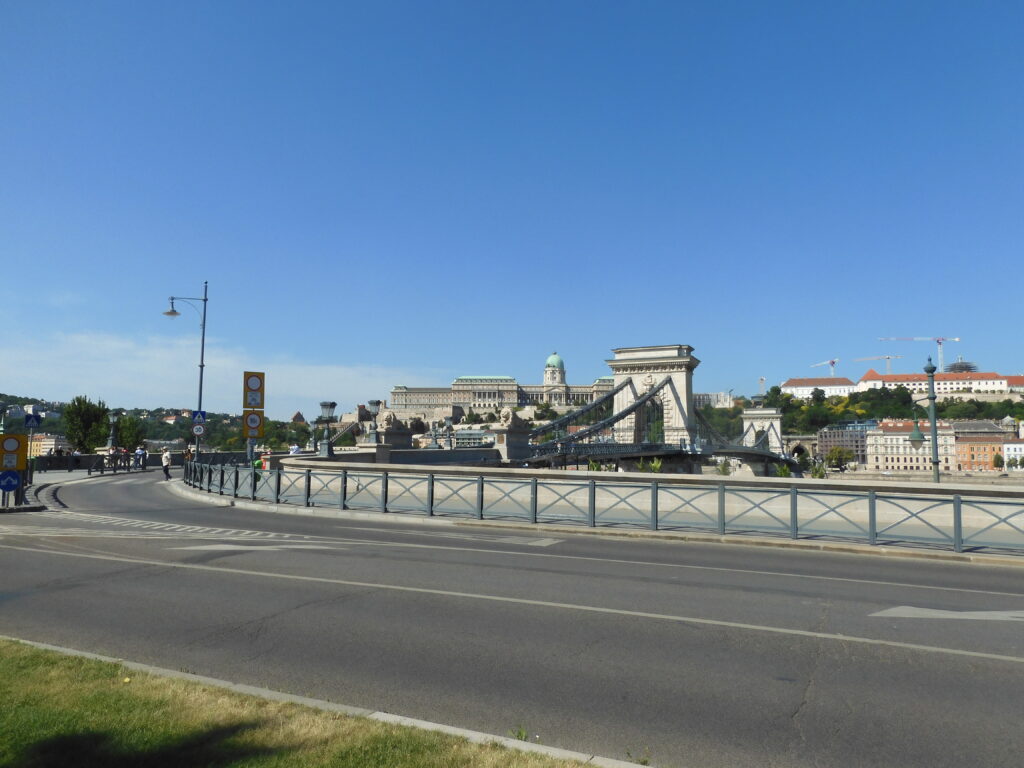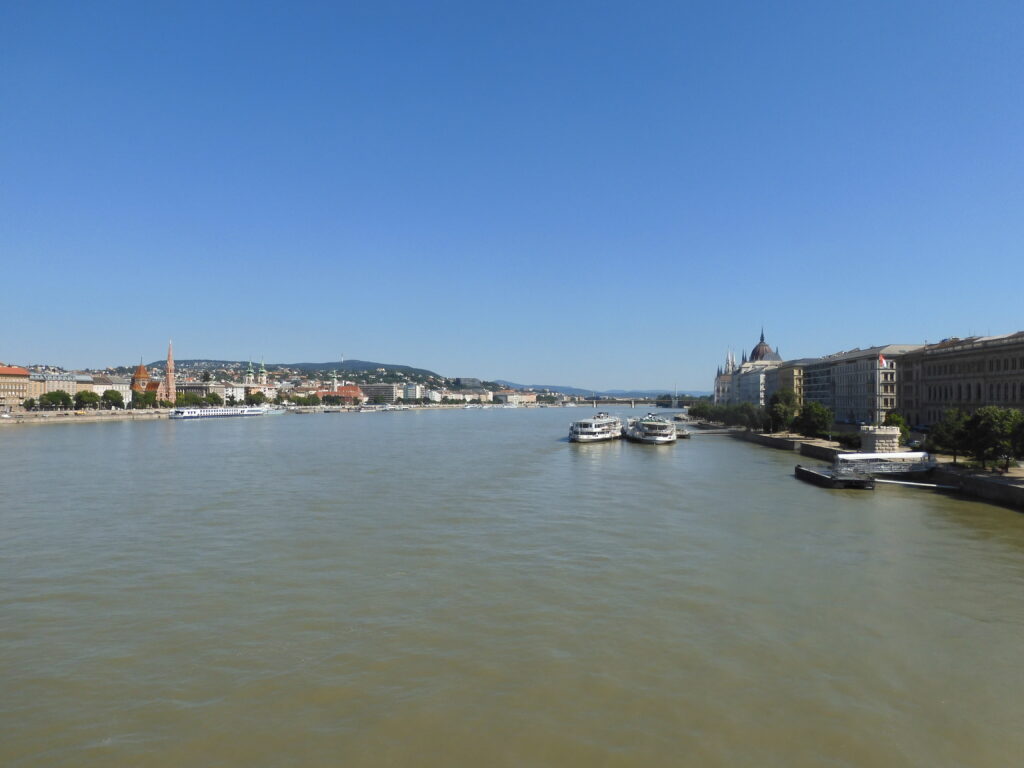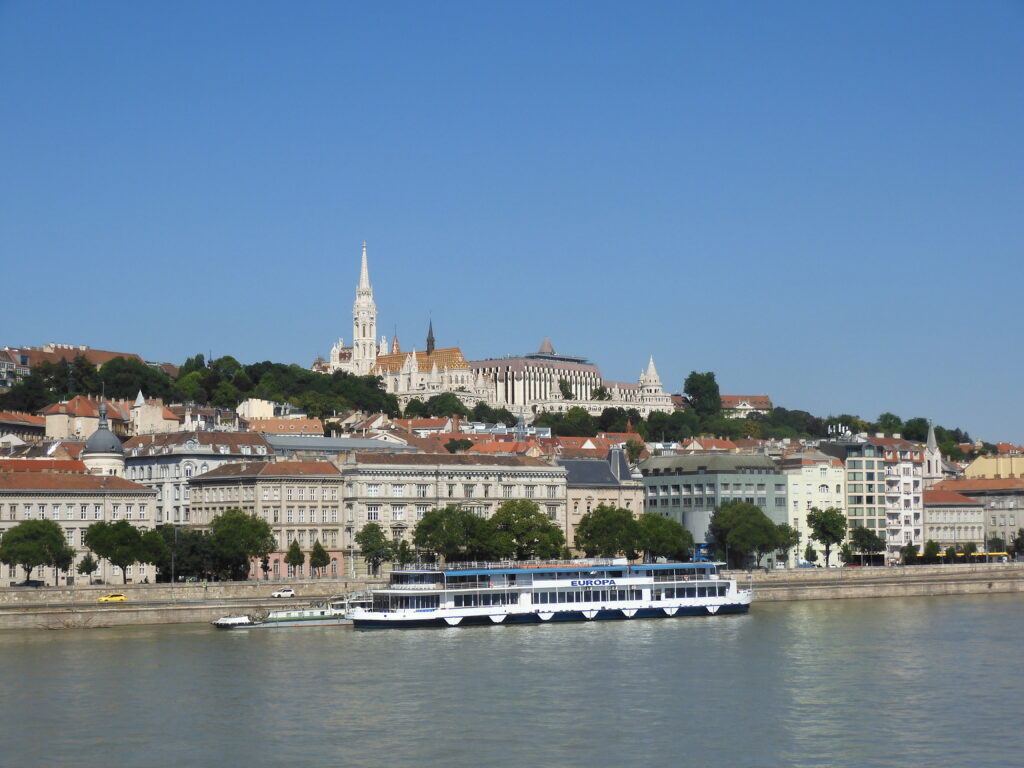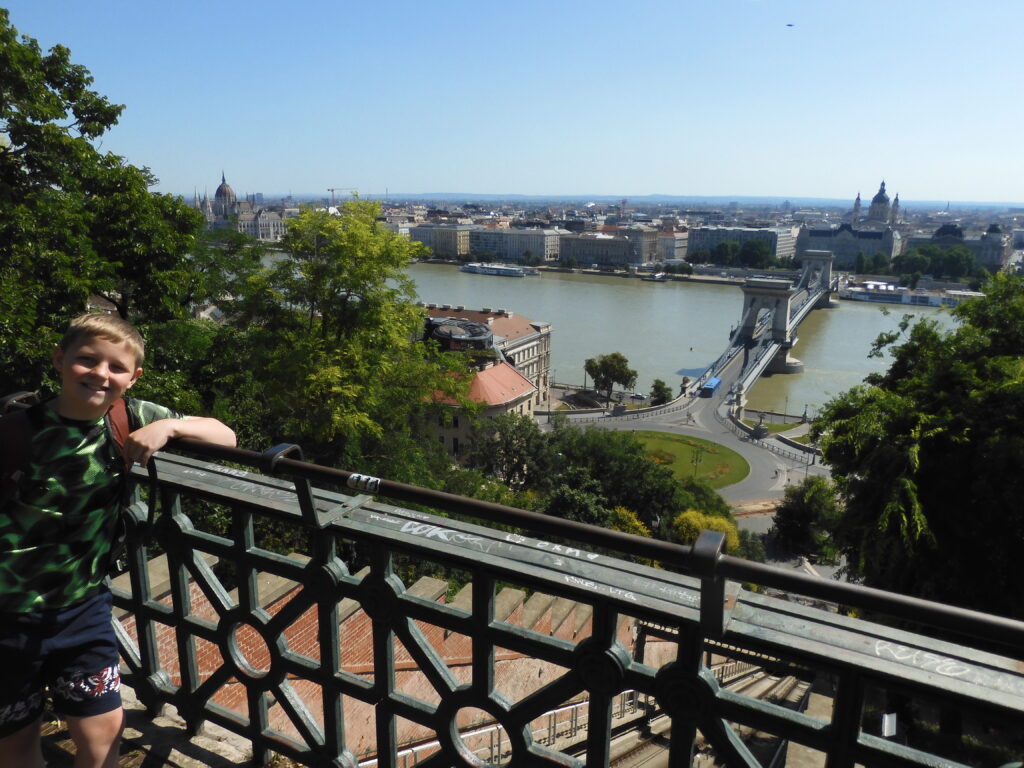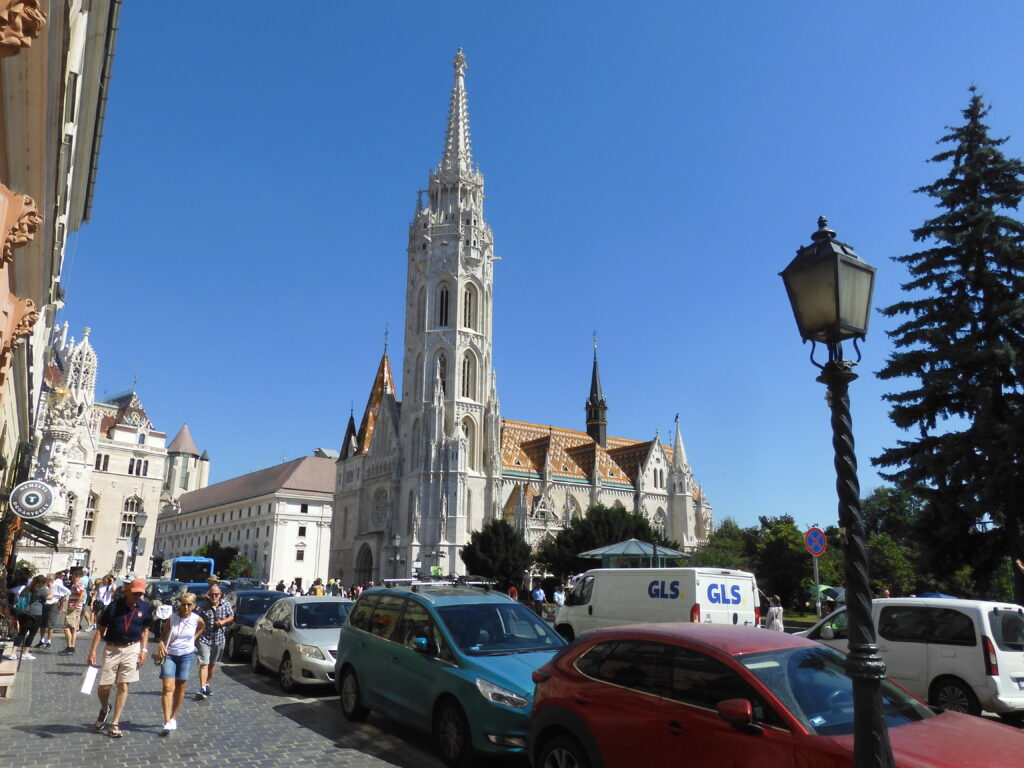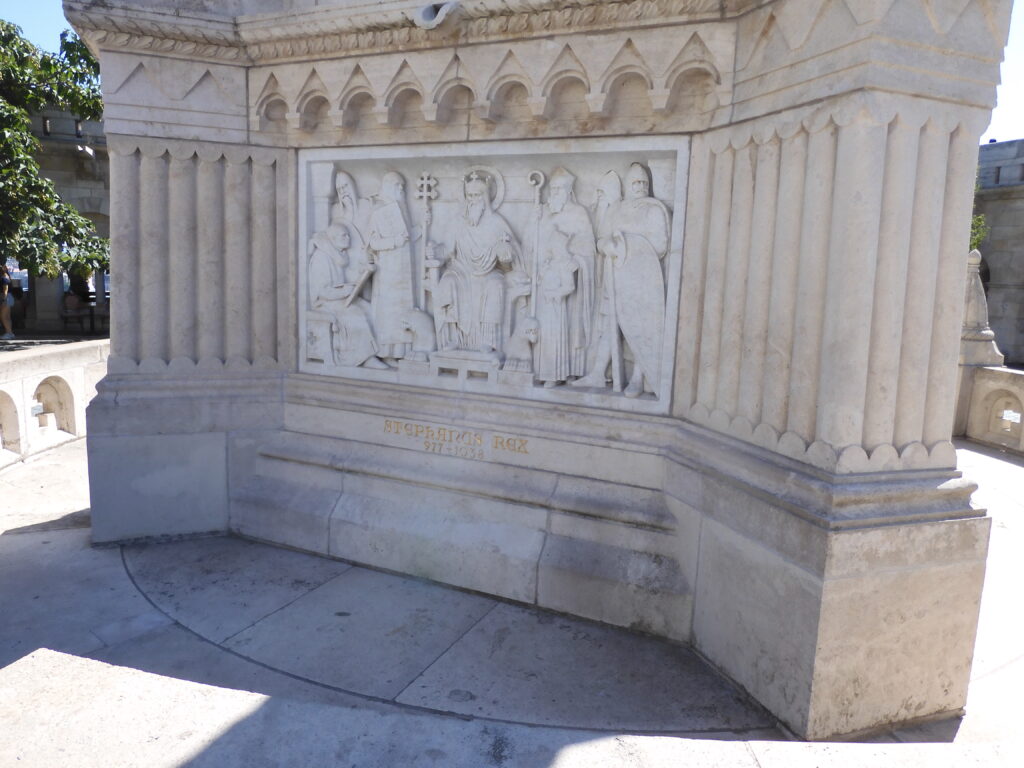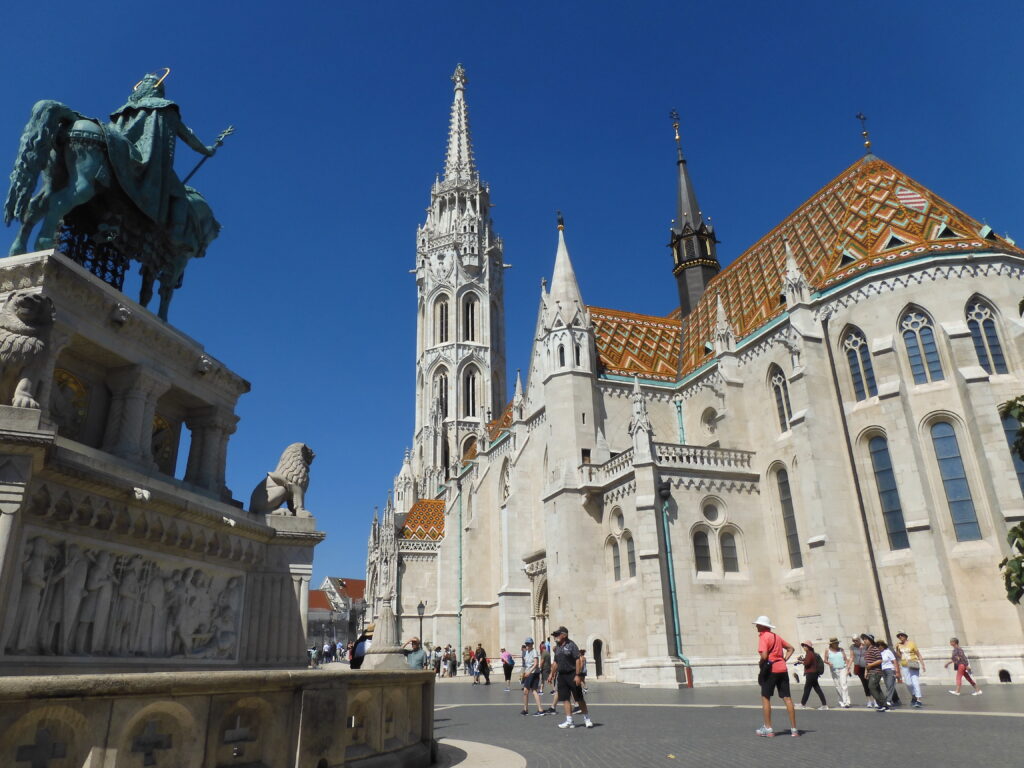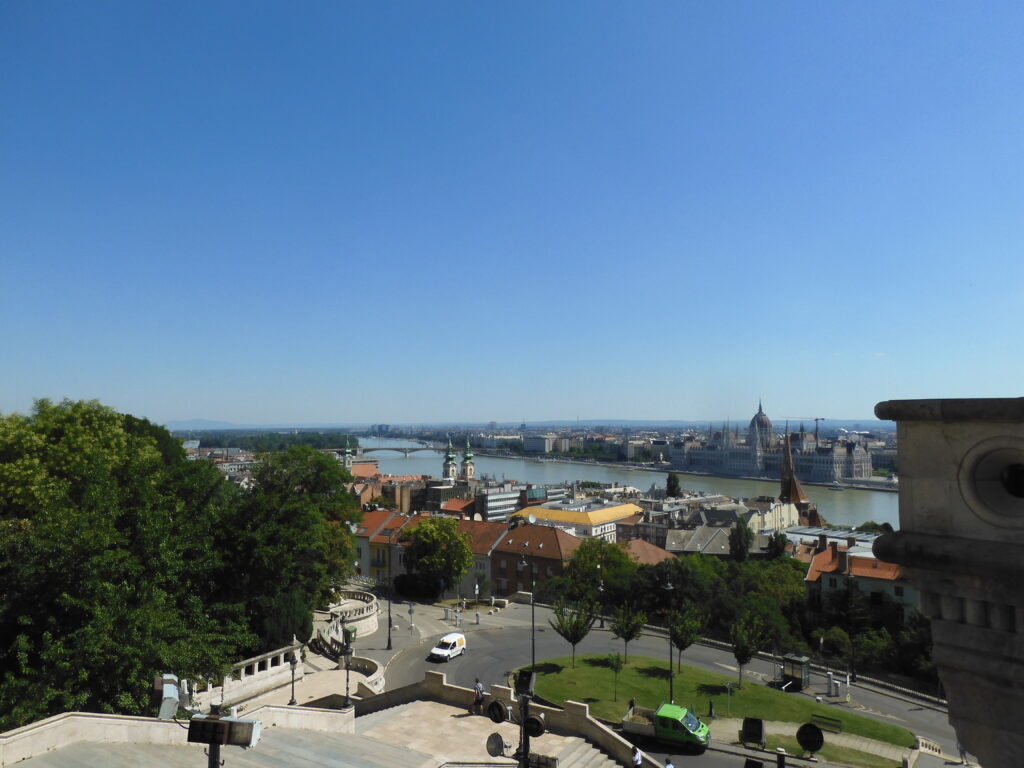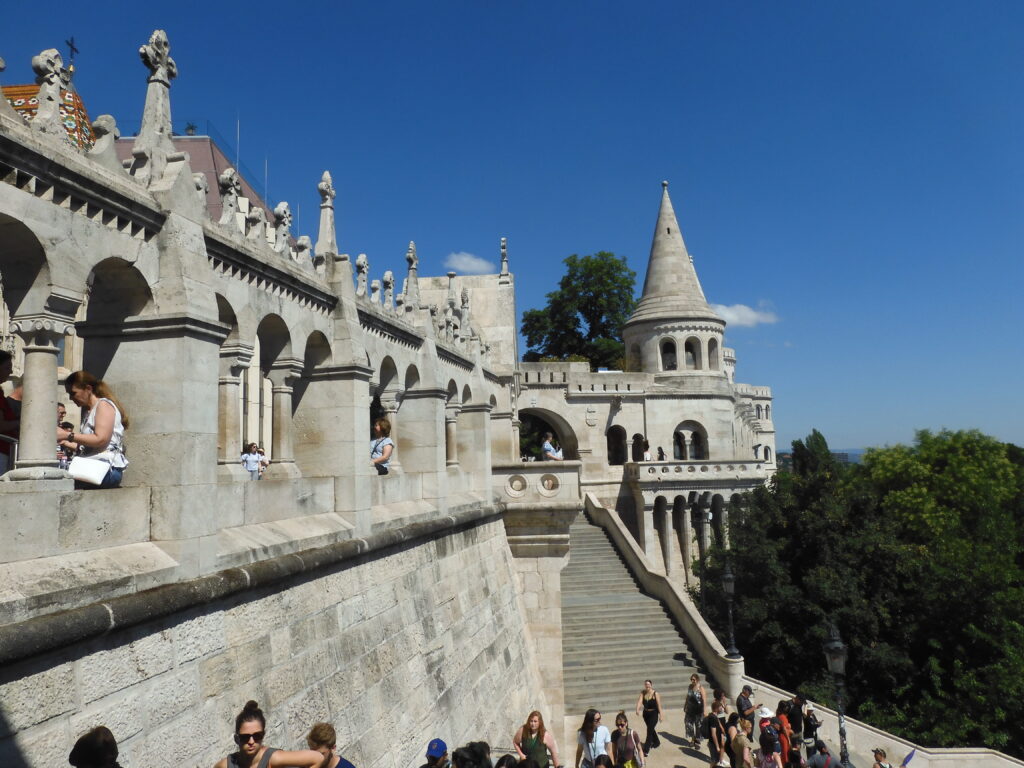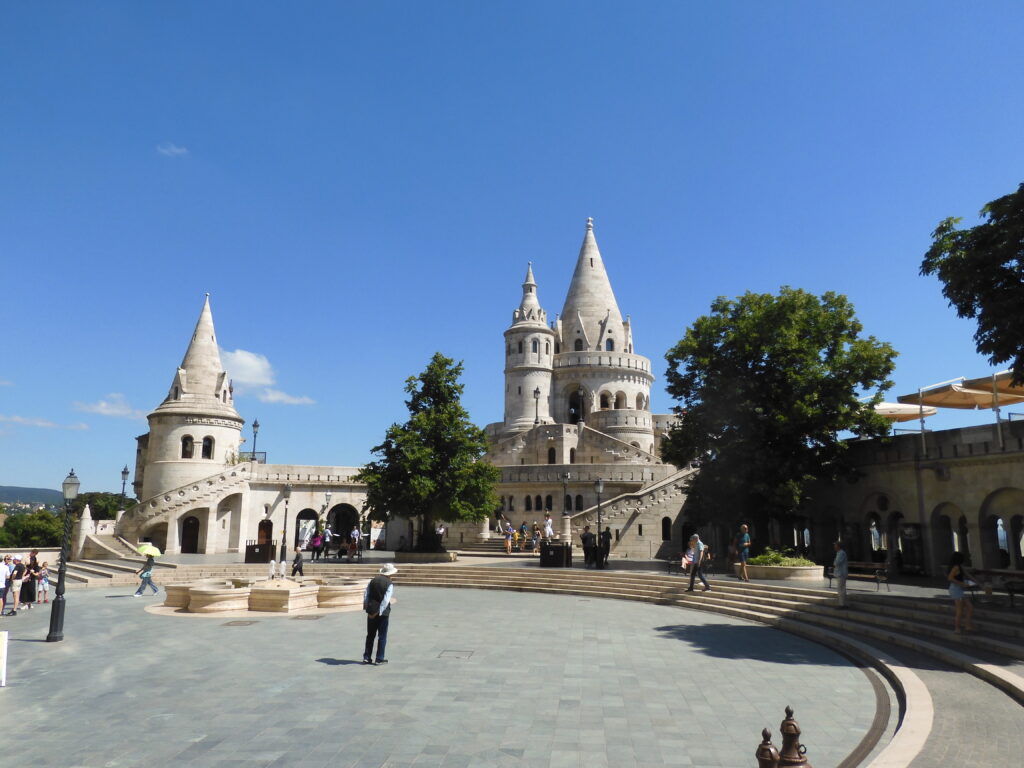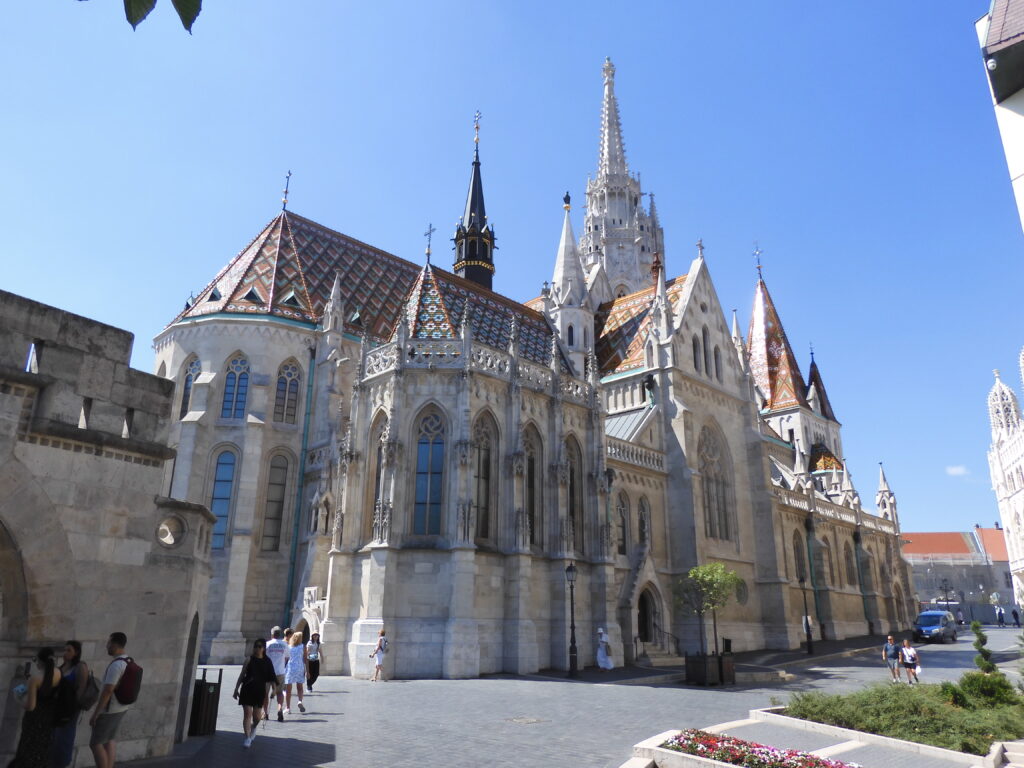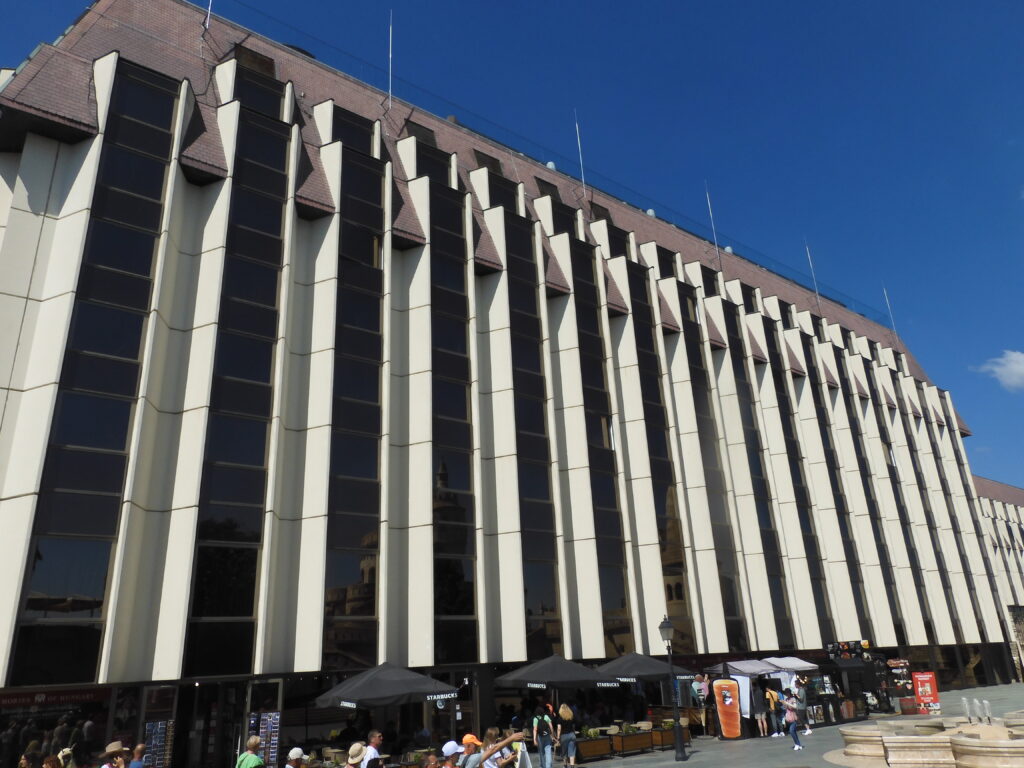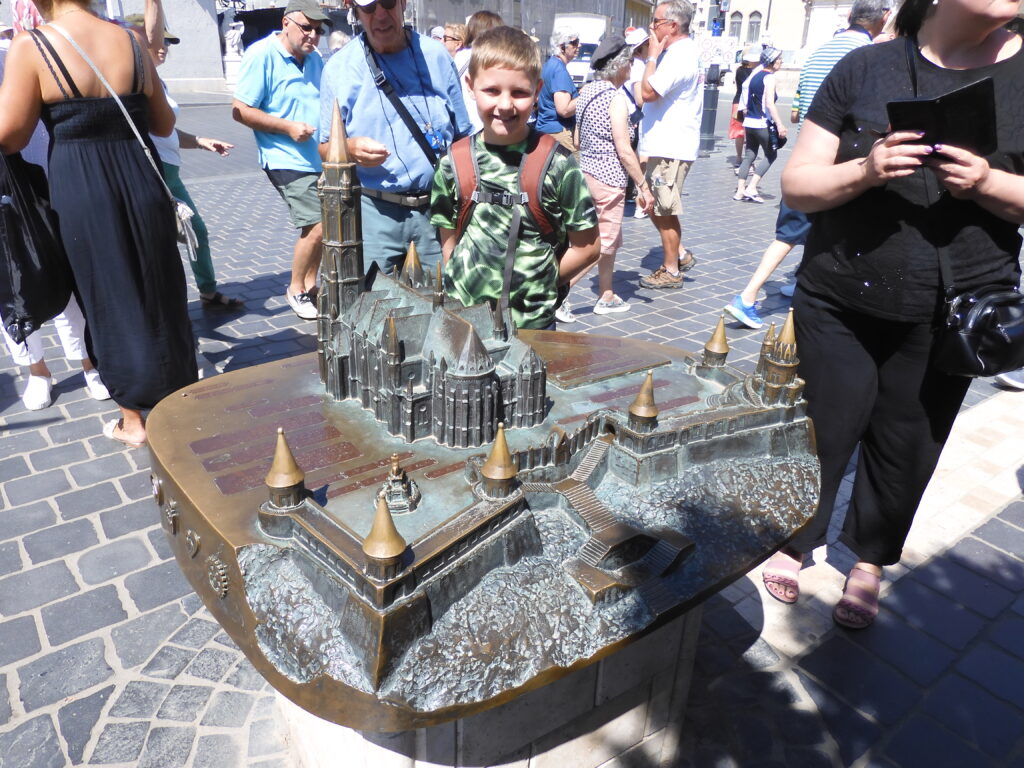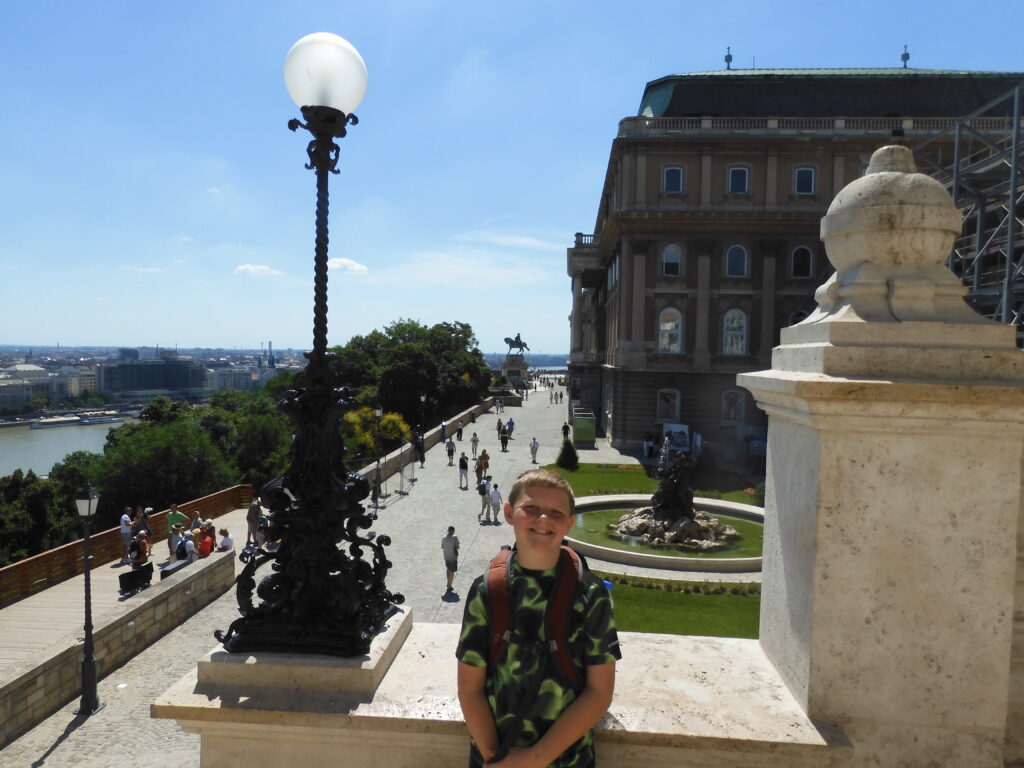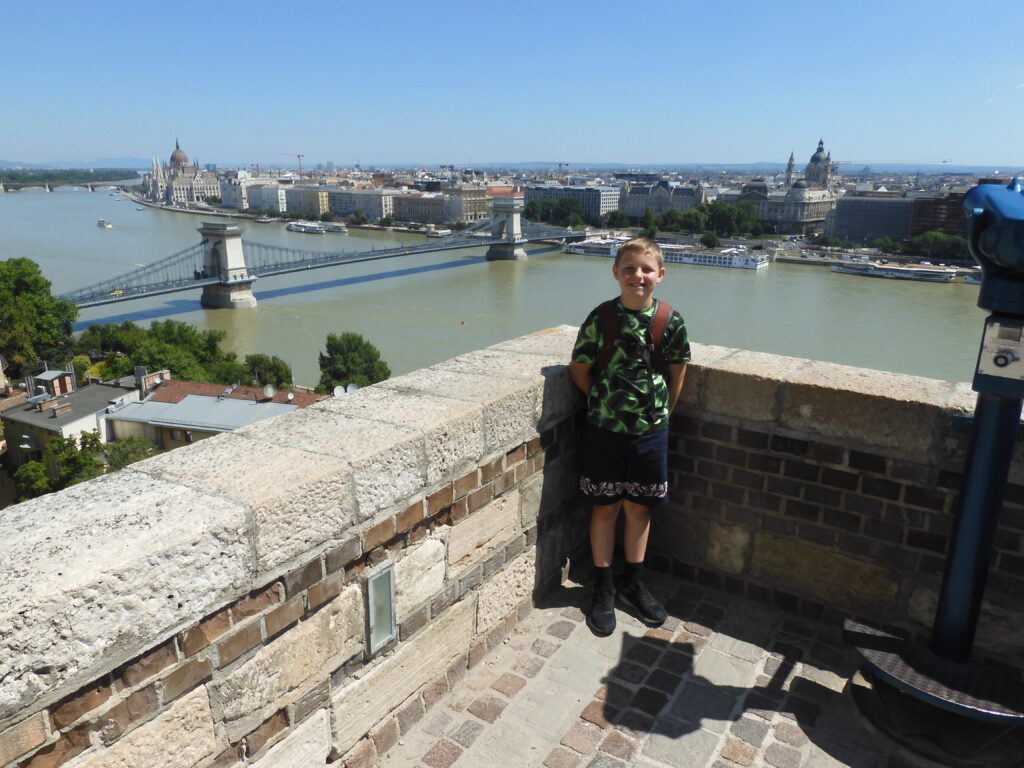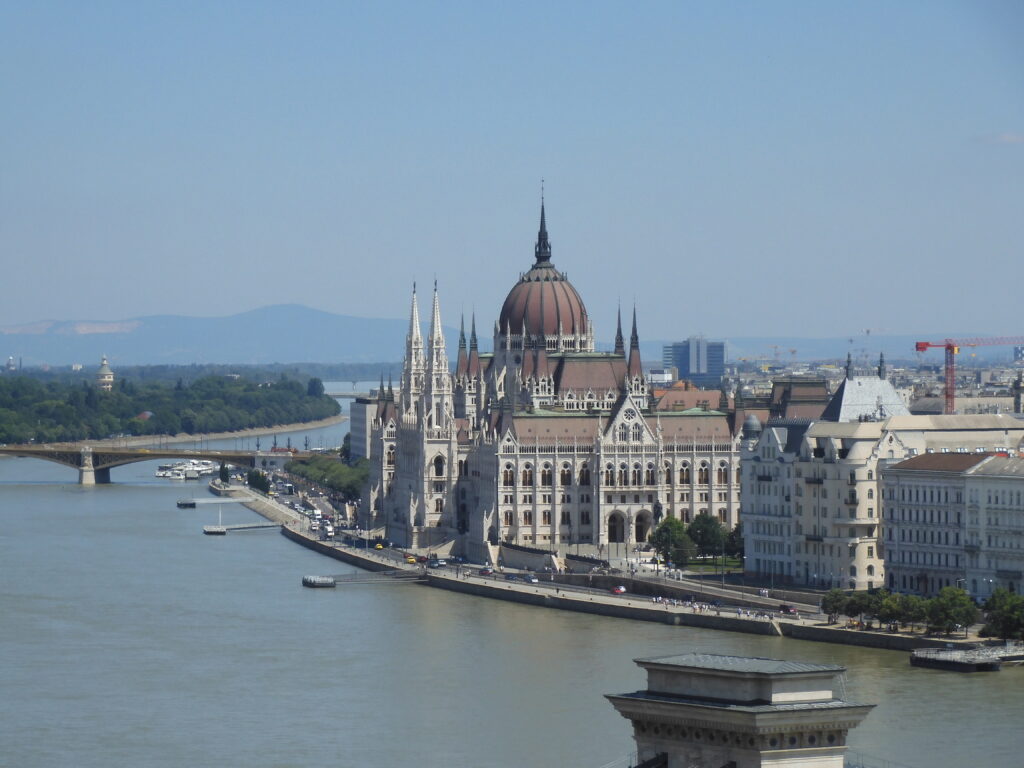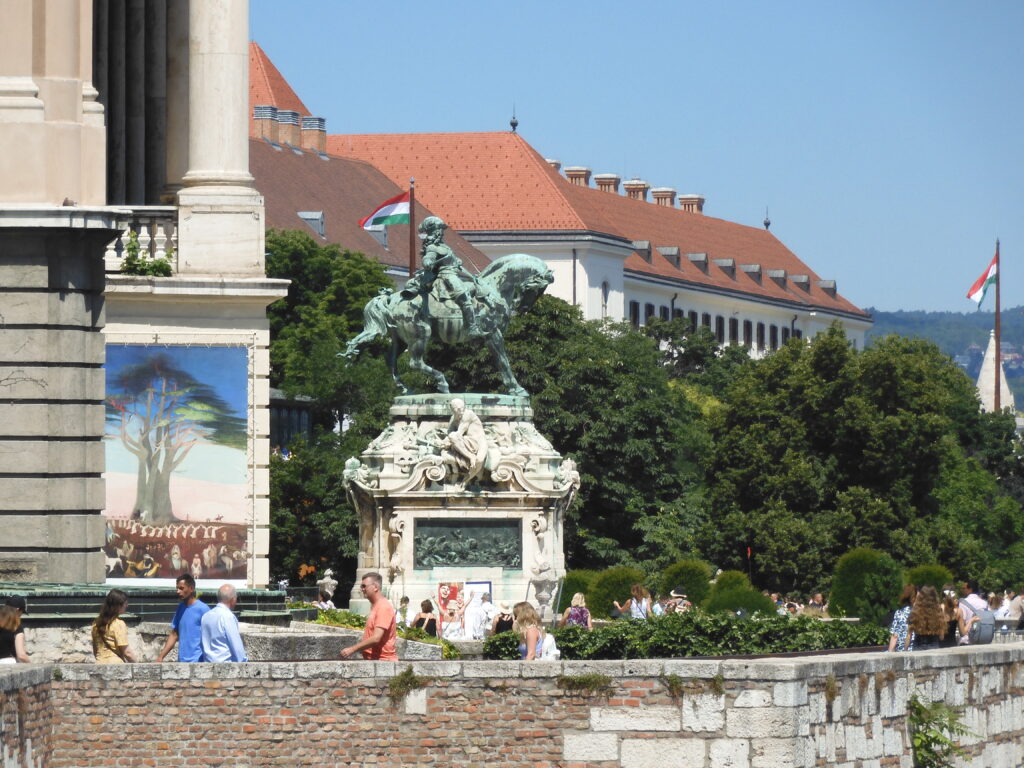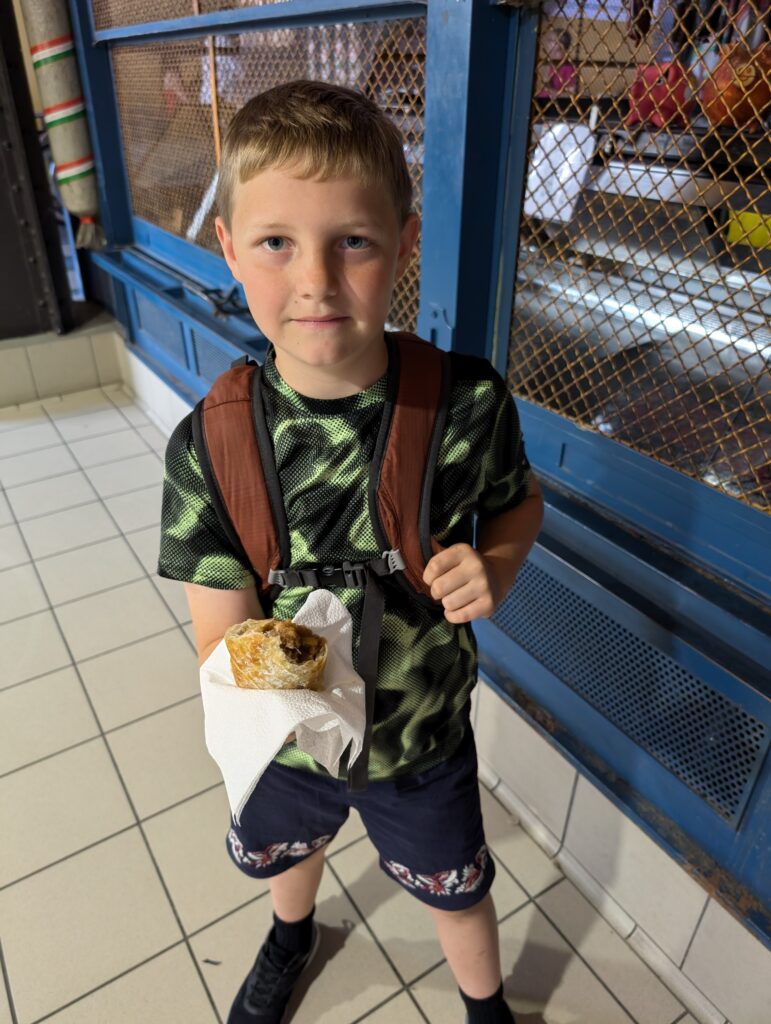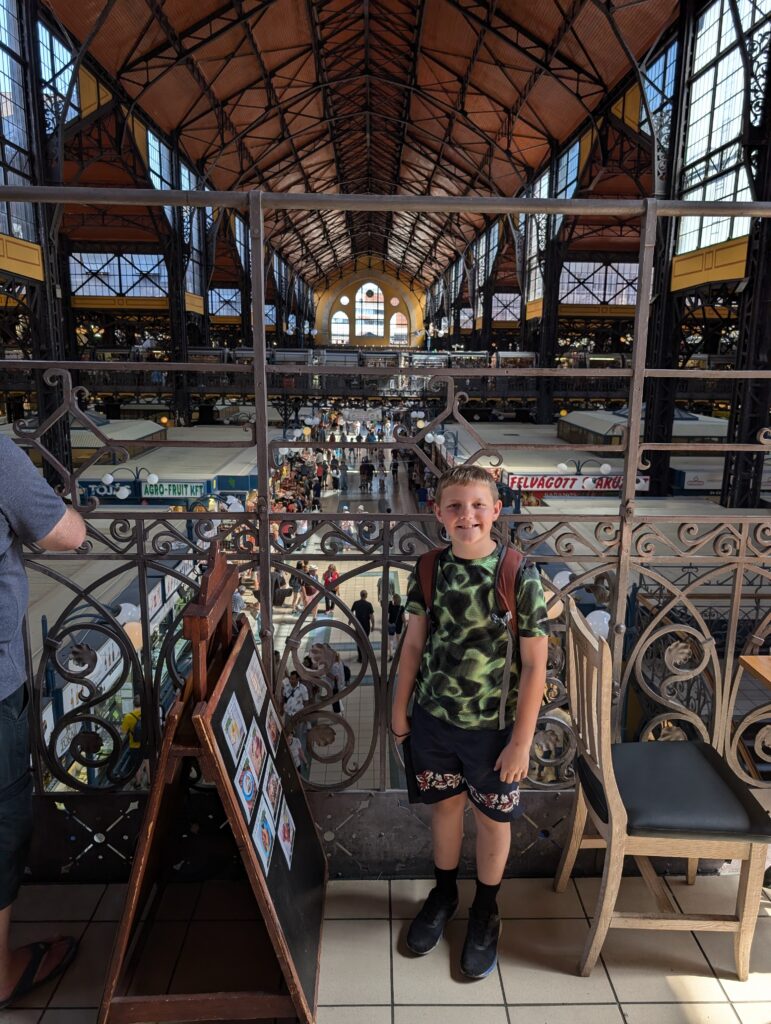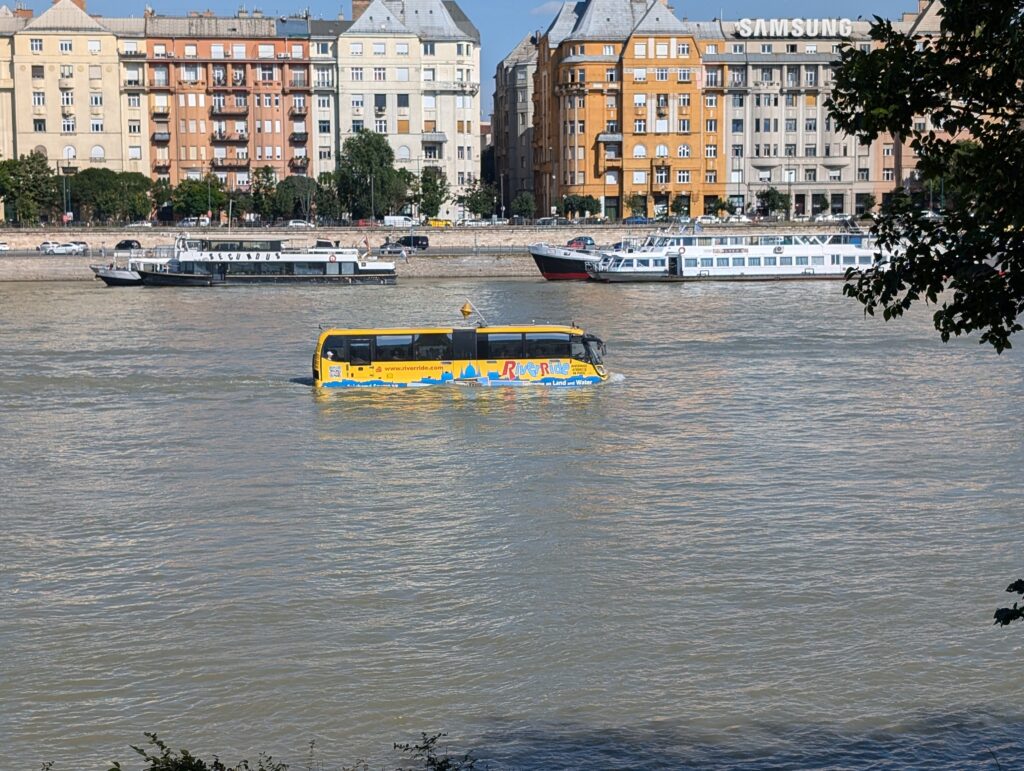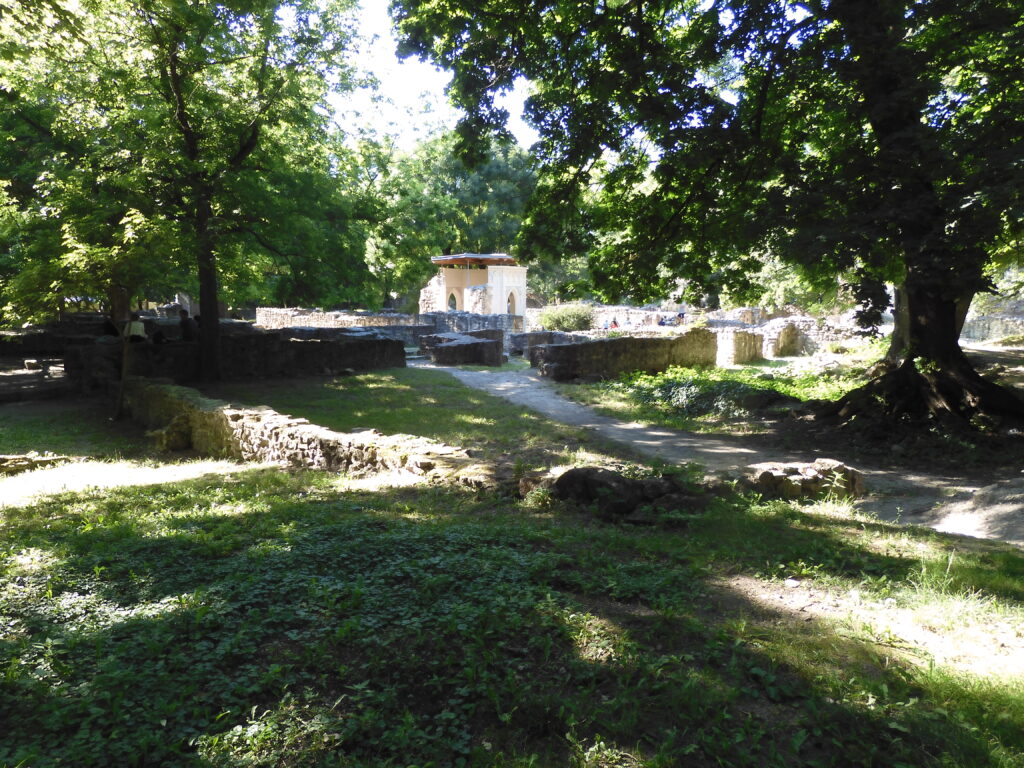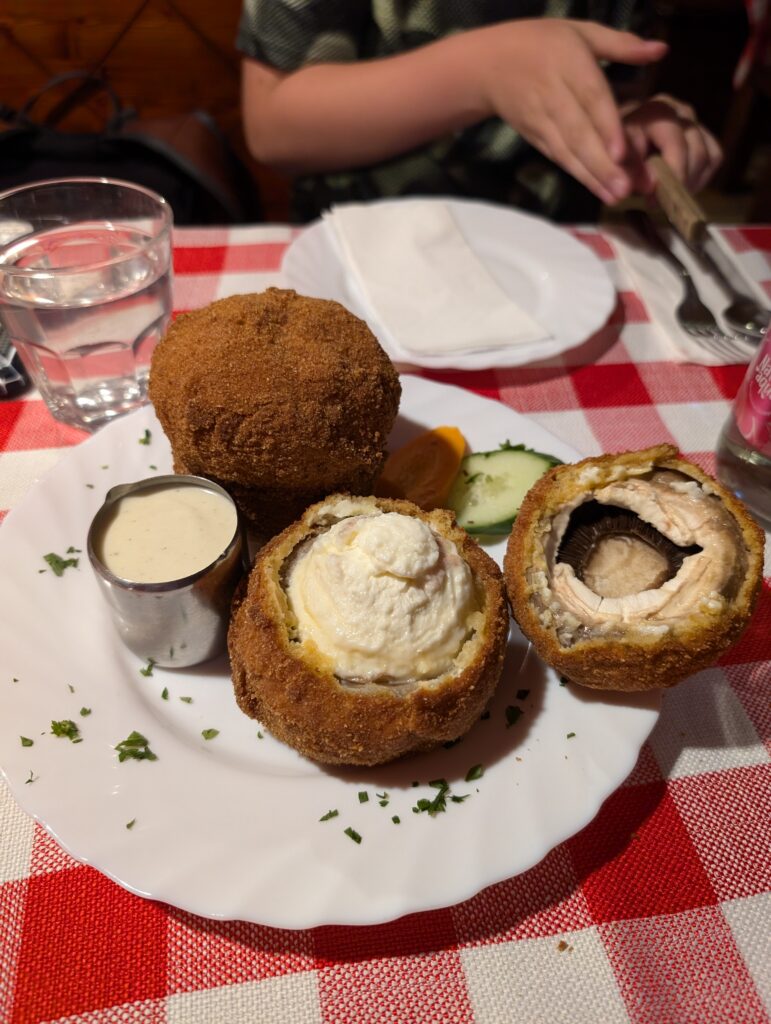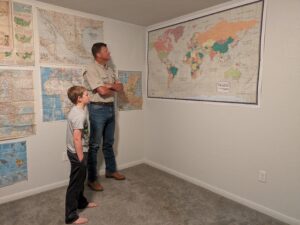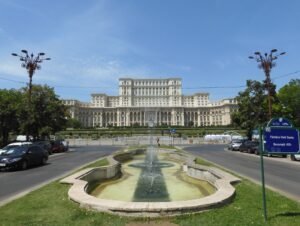Hungary
Budapest: A Big Plastic Banana
Like Bohemia (the medieval predecessor to modern Czechia), there was a significant medieval Hungarian kingdom. Hungary suffered from a closer proximity to the Turks, however. As a result of the Ottoman Wars, by the end of the 16th century, most of Hungary was either an Ottoman vassal state or a province of the Ottoman Empire itself. The capital city, Buda, became Ottoman territory. The area later came under the influence of the Habsburgs and was eventually part of the Habsburg Austro-Hungarian Empire that lasted into the 20th century. Don’t be fooled by the name, though. The Habsburgs didn’t hang out in Hungary. The name inclusion was more of a political sop. They much preferred Vienna, with some of them living in Prague occasionally.
Hungary never really could become independent of the Habsburg empire, but they did finagle a sort of semi-autonomous status, with their own legislature and a shared monarchy in the 19th century. They tried really hard to emulate Western European powers. Hungary finally achieved independence with the demise of the Habsburg empire after the first world war, only to be occupied quickly by the Nazis during the second one and retained by the Soviets all the way up to 1989.
Hungary’s 19th century thirst for a national identity was the driving force that created most of Budapest’s main attractions. The Turkish thermal baths are notable exceptions. The city of Budapest itself is a conglomeration of three older cities: Buda, Pest, and Opest. Regions of the city are still referred to using this nomenclature. We hired a room on the Pest side of the river, for example. The result of this desire to emulate Western powers and create a national identity is what I would call a “plastic banana” European capital. There are a lot of impressive looking buildings – that aren’t very old. They were just made to look impressive and old. The architecturally impressive parliament building is a 19th century Westminster Palace wannabe. Even Buda Castle, the Fisherman’s Bastion, and St. Stephen’s Cathedral are all examples of NEO-gothic, NEO-classical, or NEO-Renaissance architecture. St. Stephen’s does have a mummified hand they claim belonged to St. Stephen, the first king of modern Hungary, from about the year 1000. All of these were late 19th century buildings. Since the city took significant damage during WWII, there was quite a bit of reconstruction in the mid- and late-20th centuries. Budapest wants to be London or Paris, or even Vienna or Prague so bad – but it just isn’t. That doesn’t seem to stop multitudes of tourists from streaming over all of the faux-ancient tourist sites, though. The Danube River provides an endless source of river cruise excursion visitors.
Our first item for business was not a tourist stop at all, but a trip to worship. We identified a Church of Christ and made our way to it via the Budapest metro system, which is easy and efficient to use. The church met on the second floor of a residential building that had a shop or two on the bottom floor. Of course all of those shops were closed up on Sunday morning, so we weren’t sure if we were at the right place. We were a bit early, and the building entrance was locked. Eventually, we slipped in when a resident left, although we received a long, sideways glare. We followed the directions from the church’s website and indeed made it to their worship space. There were 11 of us present that Sunday, Caleb and I, three West Africans, a fellow from Tennessee who had married a Hungarian and now lived in Budapest, the Tennessean’s son and daughter-in-law, and one older couple and another single man from Hungary. Europe is a tough venue for Christianity these days.
After worship and Bible class, Caleb and I found a place for lunch where we enjoyed some find Hungarian dishes, including goulash. This is more like a stew than the stuff Stephanie makes at home, which is noodle based. There were a few hours left to sightsee after our late lunch. We saw the massive faux-old parliament building. The dome of this building actually collapsed when they were building it, triggering a restart on the whole project. I believe it took some war damage. The other primary modification was that during the period when Hungary was known as, “The People’s Republic of Hungary,” the dome had a red communist star on top. This has of course been removed.
As we walked back toward the house, we passed through a park with massive outdoor screens set up to watch the afternoon’s Formula One race. We passed a monument to those who suffered Nazi occupation, peculiarly followed by a Soviet liberation monument. It seems odd, since they didn’t really liberate Hungary, but just took it from the Germans. It may have been a Soviet-directed monument. They have sort of passive-aggressively allowed the monument to be overshadowed by other things (like an F1 screen). Near it, we oddly found statues of Ronald Reagan and George H.W. Bush. These may also be passive-aggressive commentary against communism. Though he often does not receive full credit for it, Reagan’s policies were instrumental in the economic and political collapse of the Soviet Union and her satellite states.
We went back to the room to rest for a bit. I felt recharged, but Caleb was tired. He stayed in the room to rest, and I walked over to look at Heroes Square. This is a huge set of monuments next to a park with even more museums and monuments. There was a peculiar new Museum of Ethnography with a grass roof. The city of Tirana Albania donated a George Castriota statue. Castriota was sent to Istanbul as a hostage to the Ottoman Turks by his family to ensure their loyalty. This was a fairly common practice in those days. He received a top education there and rose through the ranks of the Ottoman hierarchy, kind of like Joseph in the Bible. After decades of service to the Turkish sultan, he revolted and united the towns around Albania against Turkish rule. He eventually agreed to the nominal sovereignty of Venice, but really only did that to insure he would receive their protection as an ally. He was of course a national hero to Albania, and many Western Christian leaders looked to him as a symbol of resistance to the Ottomans and to Islam.
This same park had several other monuments and event centers, including a music venue. There was a George Washington statue, another 19th century castle looking building that just served as the agriculture museum. Eventually, it all led to Heroes Square. Heroes Square had some amazing statue art. It was worth passing by for a look. Tourists of course all have this on the list of places to stop, so avoiding the selfie like is a bit of a challenge. I did end up with some nice shots, though. I made it back to the room in a timely manner, and decided to forego running in the morning in order to have fresh legs for what I knew would be a busy walking day on the 24th.
(Continued)
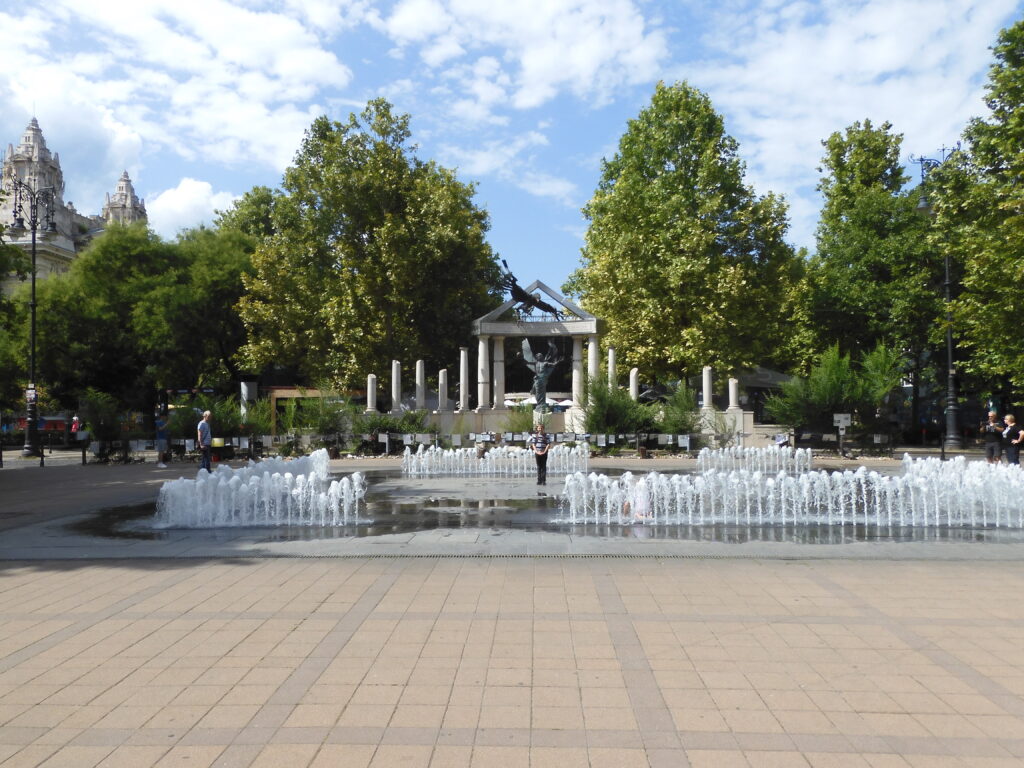
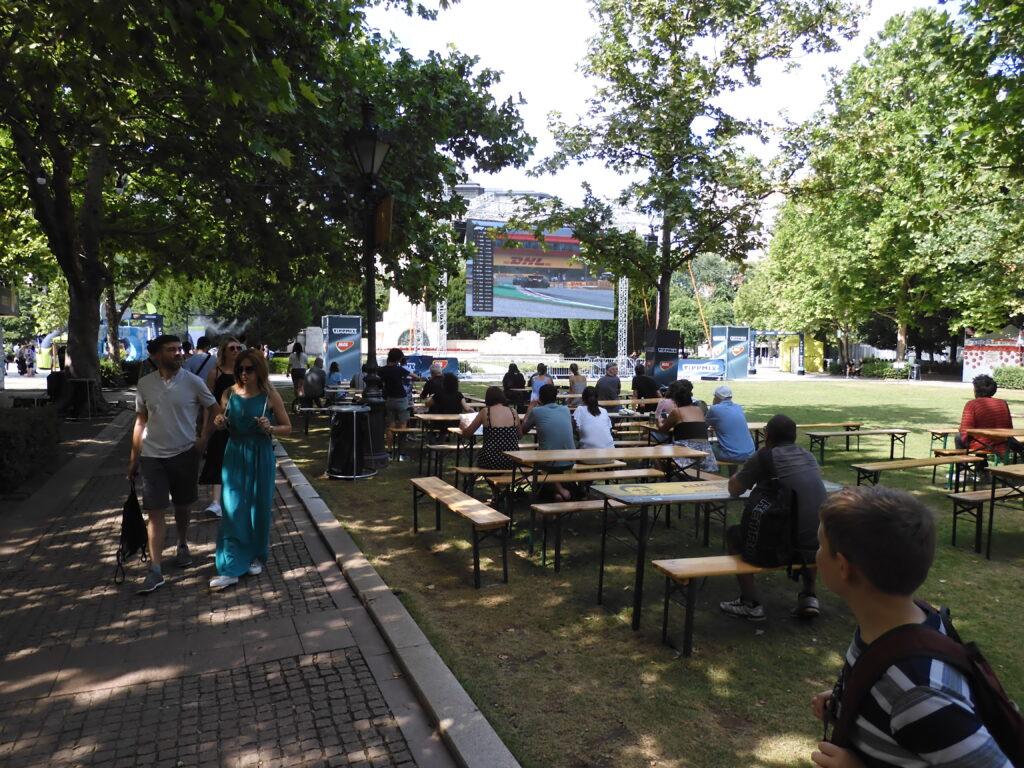

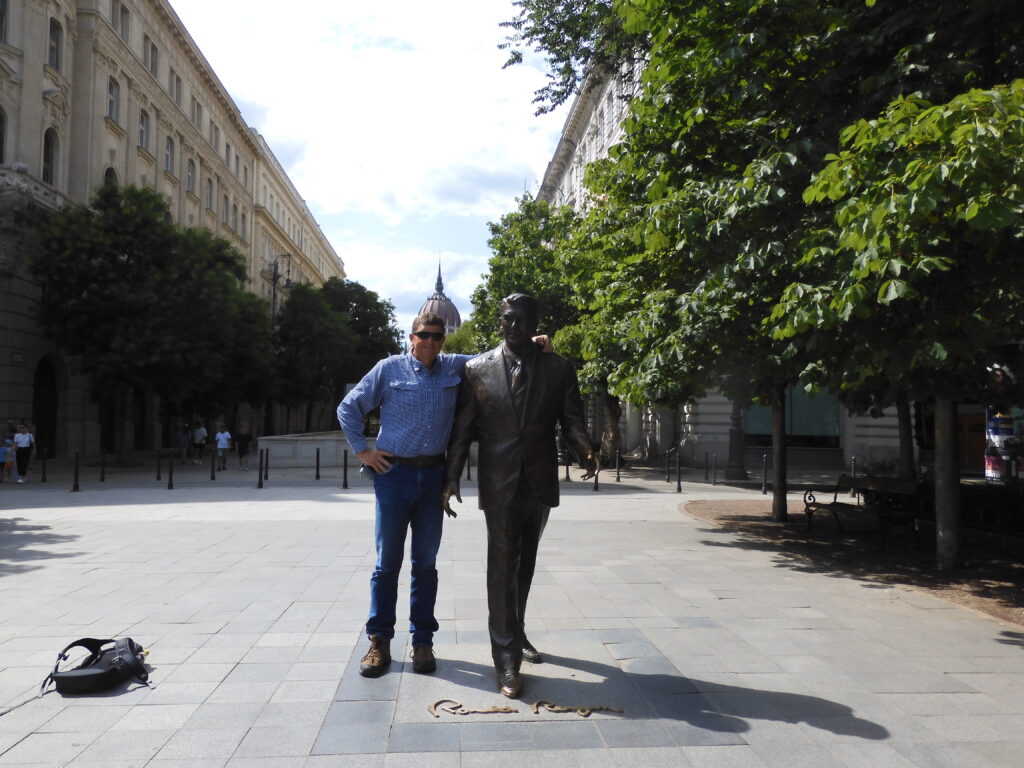

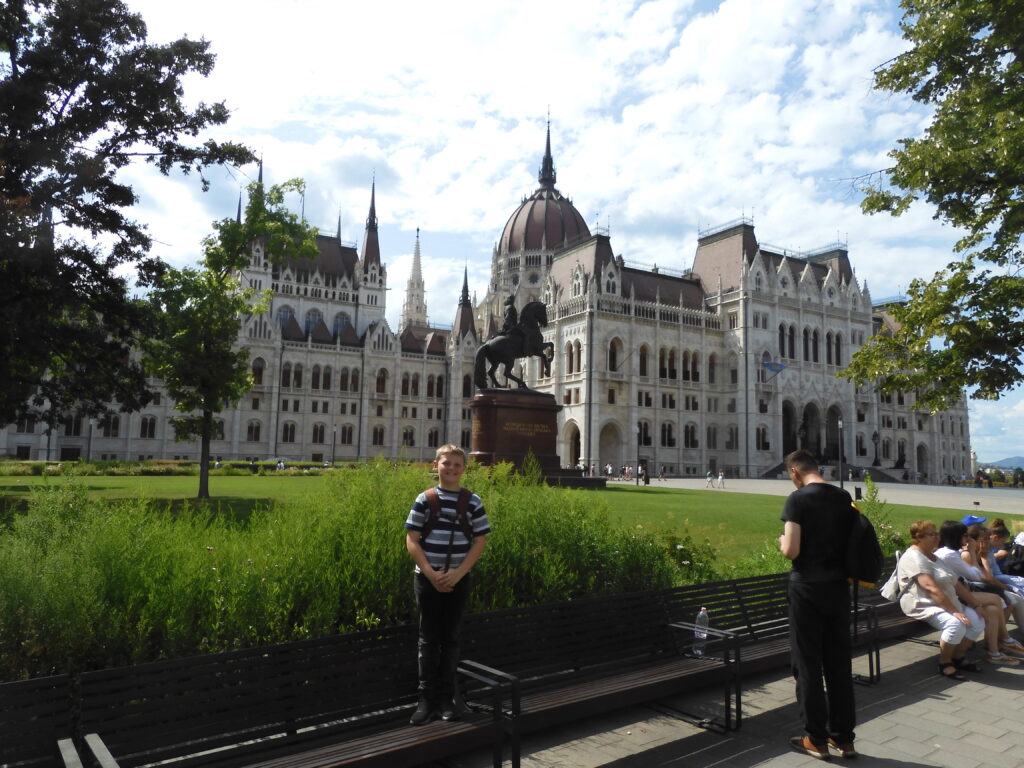
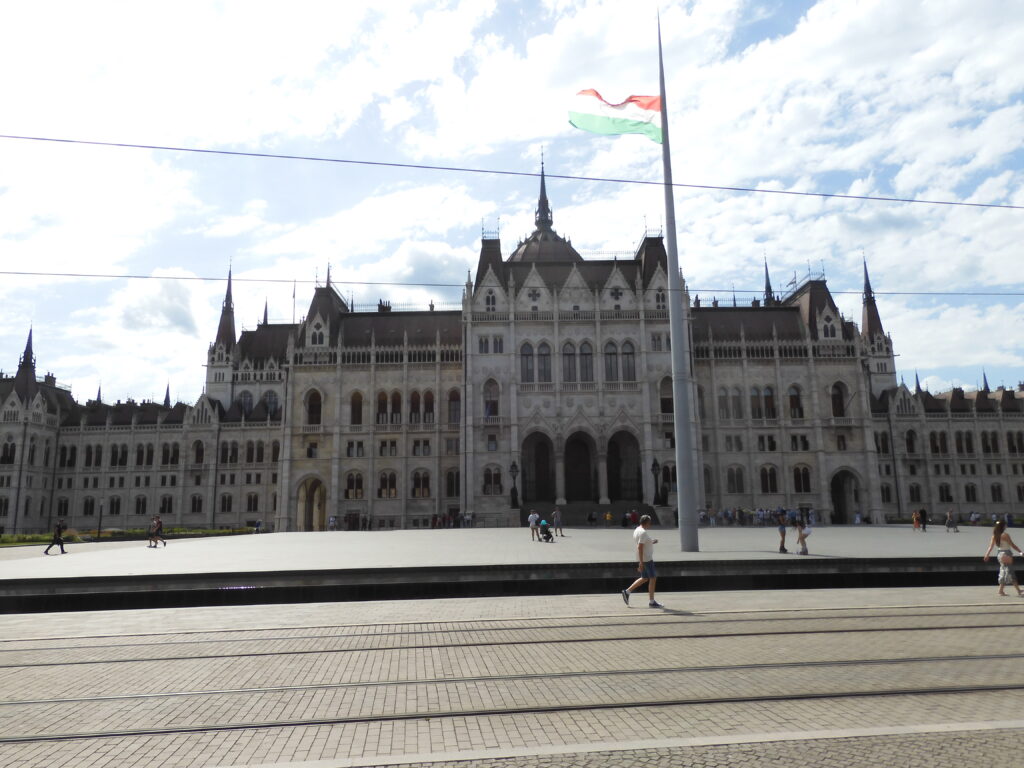
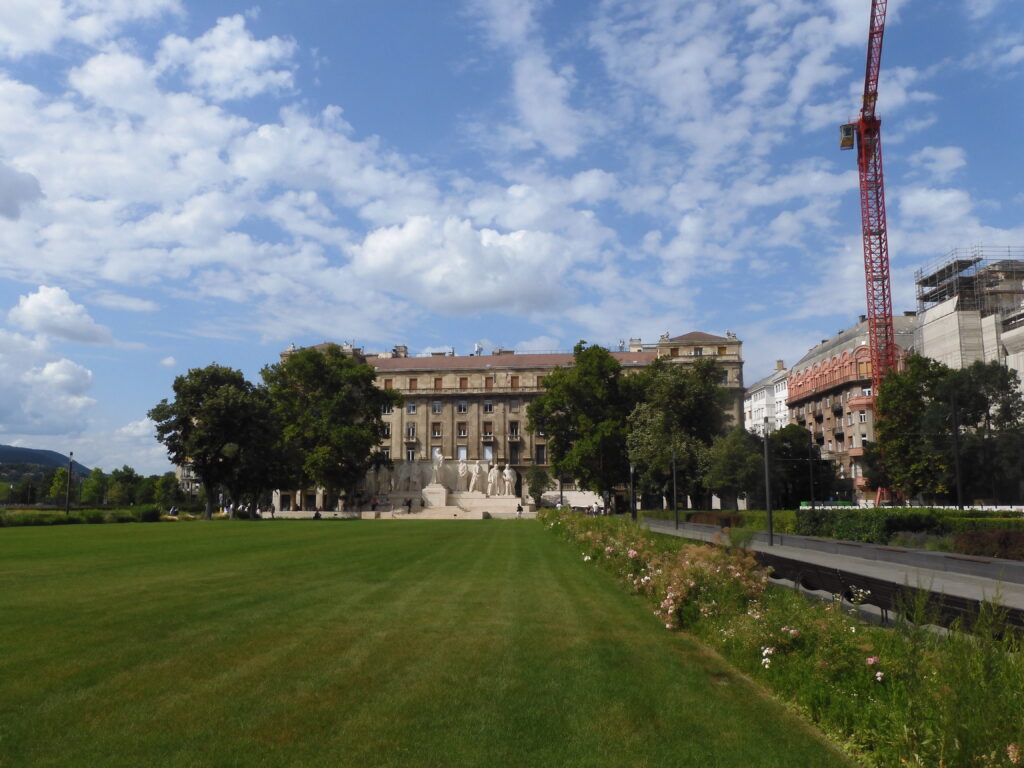
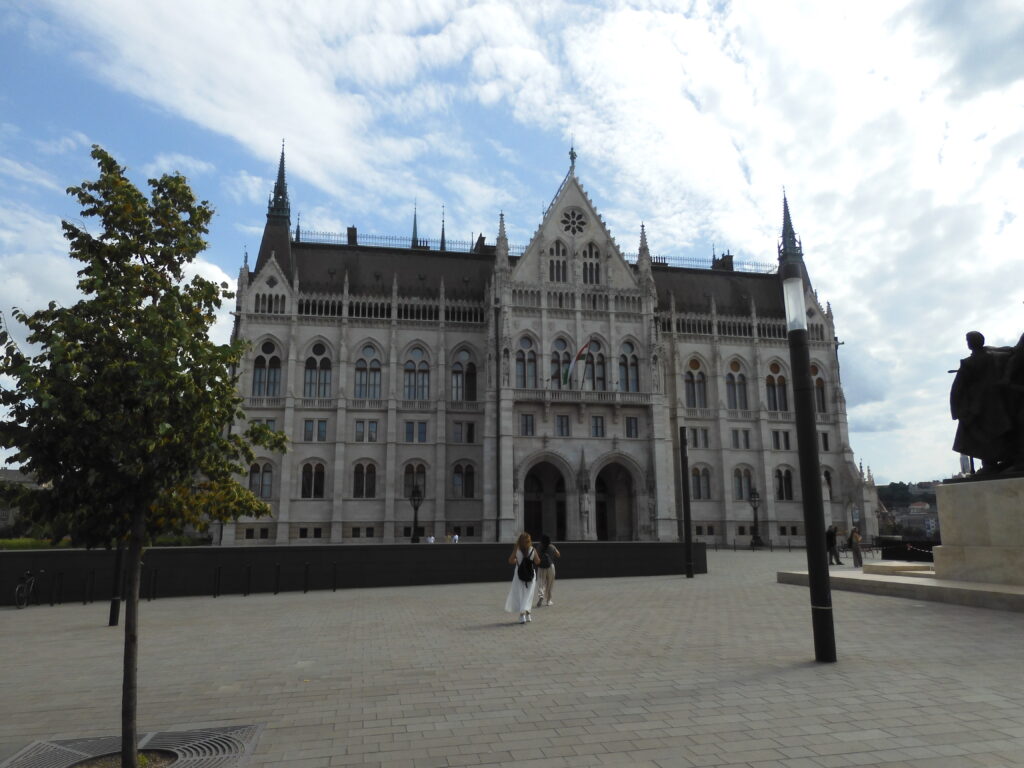

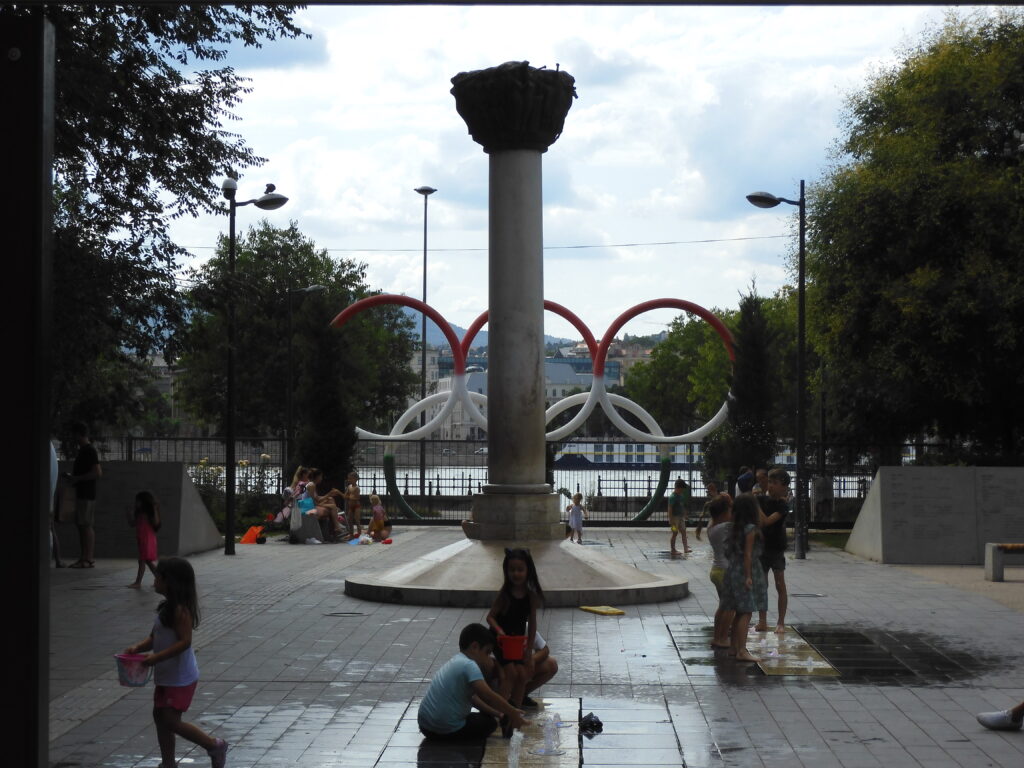
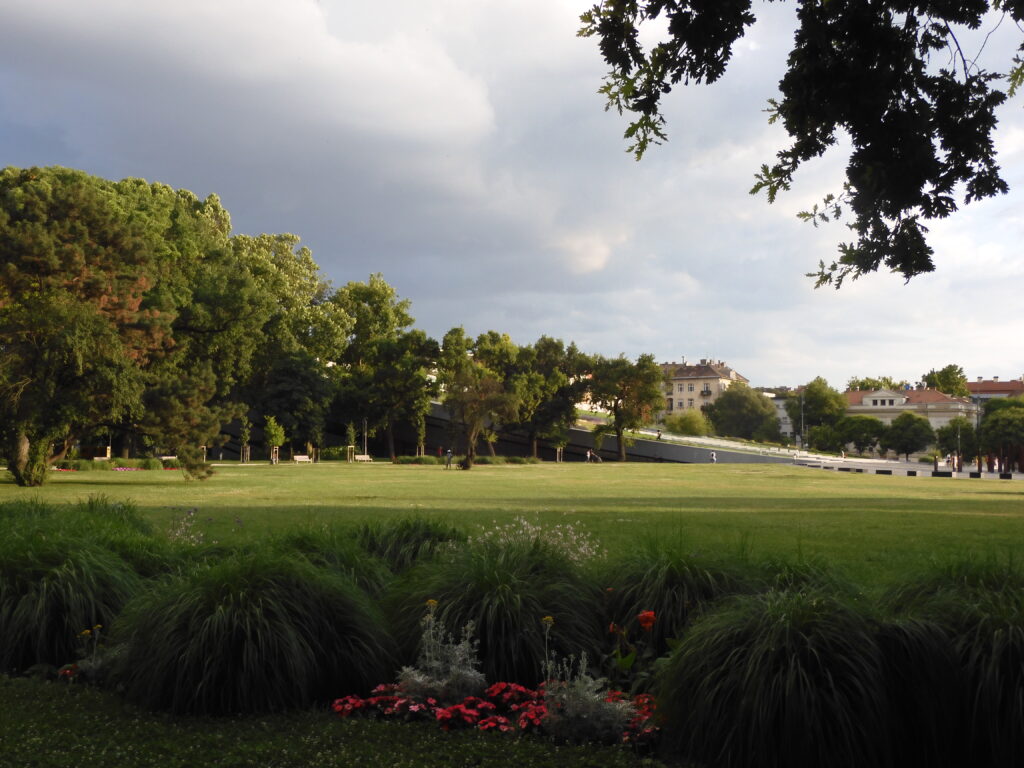
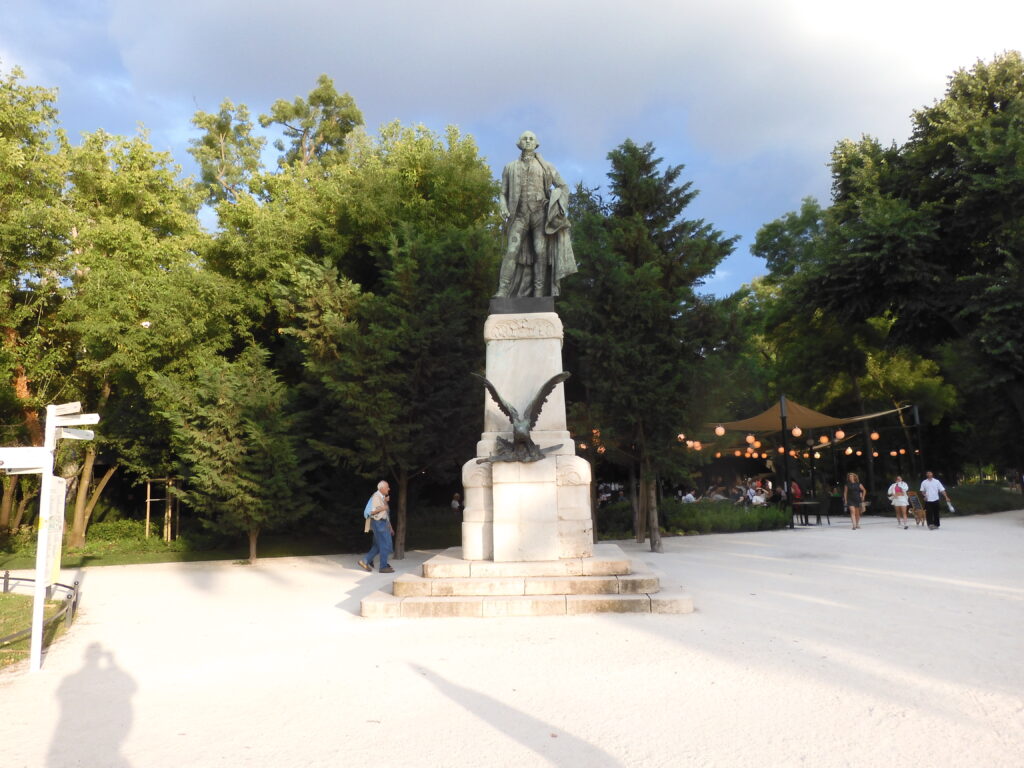
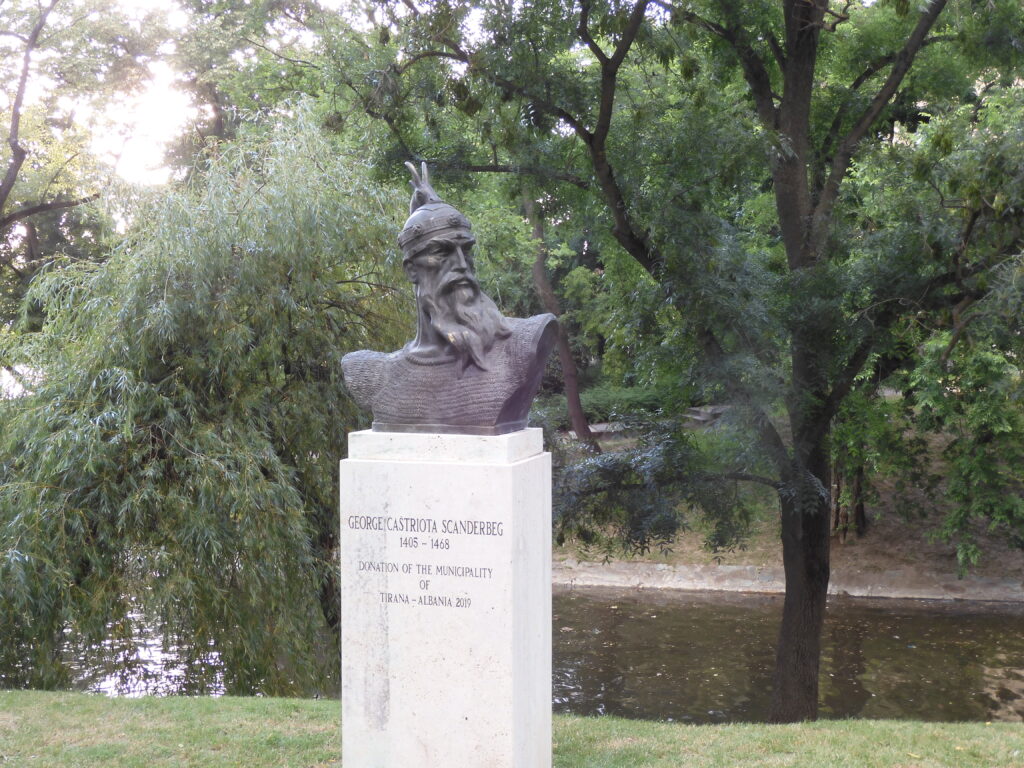

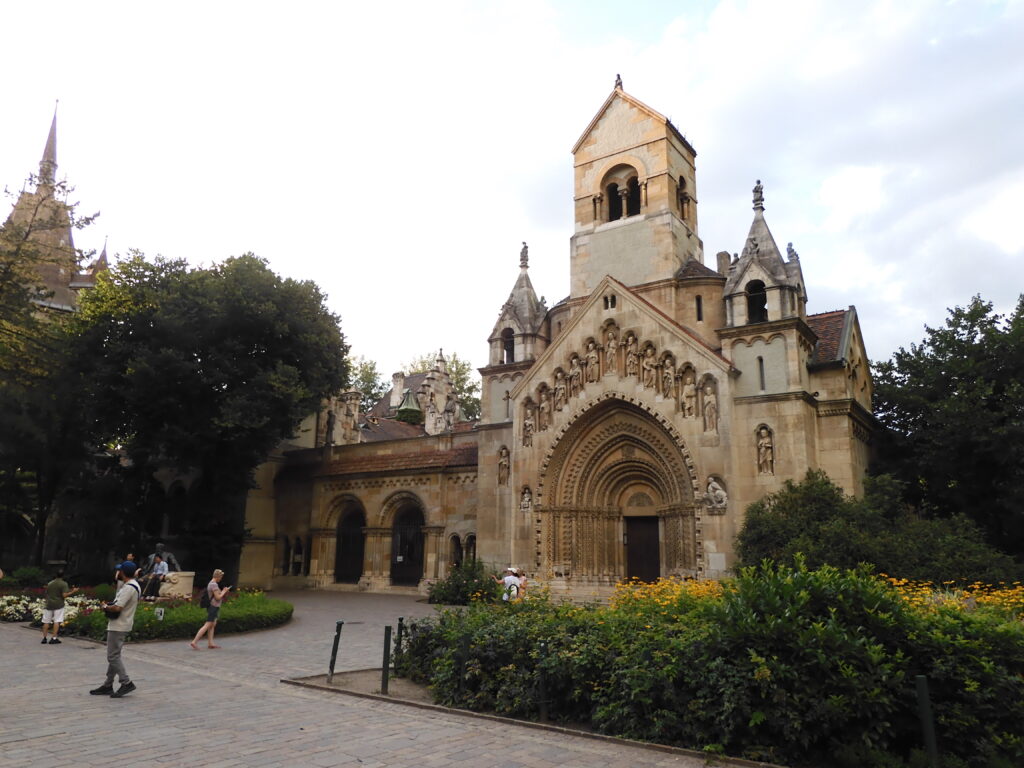
I did some research online the night before to set up a reasonable geographic pattern that captured the main remaining important places to see. I had booked a night train that departed at 3:00 p.m. on the 25th. That left us some sightseeing time on Tuesday, but I didn’t want to push my luck. There are always some logistical problems on moving day, and there is the question of what to do with your bags while you do your final touring. I thought it best to get the rest of the touring done Monday and leave Tuesday morning for emergencies. It was probably good that we did it this way, because Caleb was wiped out after the long walking (and swimming, it turned out) day.
We headed for Castle Hill, and took the expensive funicular up the hill. We crossed the scenic Chain Bridge en route. Once atop the hill, we enjoyed the view back toward the Pest side of the city for a few minutes, then hiked down to the side with the Matthias Church and the Fisherman’s Bastion. These are typical tourist stops. Matthias Church does have some historical connections, but between renovations over the years and heavy World War II bombing damage, almost nothing remains of the original church. It is a pretty building, and it was the place where they crowned the old Hungarian kingdom’s monarchs. They have a mummified hand that they claim belonged to St. Stephen, the first Hungarian saint. We enjoyed the building from the outside.
Right in the same area is the Fisherman’s Bastion. This was made to look very old, and it is an attractive landmark. It has been filled with coffee and souvenir shops inside. This is no real loss, however, as the building was just a 19th century effort to make the city look as if it had older landmarks. The legend says that fishermen would come up here to sell their wares, then head off to battle and their goods would be protected. The whole thing is hogwash, though, and it is just a neat looking structure made to look like ancient walls and turrets.
In spite of all this, somehow Castle Hill has been designated a UNESCO World Heritage site. I suppose there are other 19th century sites that qualify, so why not Castle Hill? I’ll give you one reason why not. There is a big, modern Hilton Hotel right between Matthias and the Fisherman’s Bastion! How was this allowed to happen? It came about through the influence of a very nice looking lady. Hungarian actress Zsa Zsa Gabor had several husbands. The second of these was Carleton Hilton. She convinced him to build a big hotel there and somehow influenced this happening. The old joke goes that Zsa Zsa was a great housekeeper – after all of her divorces she got to keep the house. I don’t think she kept the Budapest Castle Hill Hilton, but she was somehow able to get it built right between the major tourist sites.
The giant Budapest Castle is on the other end of the Castle Hill district, so it took a little walking to get over there. The walk is nice, and there are great views. The castle is once again a huge 19th century building made to look much older, and then renovated significantly after damage incurred during the 1940s. It is a much bigger building than the Hungarian government needed. It’s main purpose was simply to make Budapest look like a major European capital. As such, we were content to admire the architectural qualities of the outside. We had some other sites to see, so after enjoying the views of the building and the views of the city over the river, we headed back down the funicular and over the chain bridge.
This is where I added greatly to our daily burden and the complexity of the trip. Somewhere between the funicular and the tram stop on the other side of the chain bridge – a relatively small area, all things considered – I lost my wallet. I guess it was possible I could have been pick-pocketed, but it seems more likely that I just dropped it pulling my phone in and out of the much smaller pocket of the shorts I wore that day. I have a slim travel wallet that just holds my driver’s license, a couple of cards, and a few folded bills. I wore swim trunks that day in anticipation of taking Caleb to one of the renowned Turkish thermal baths that evening. The size and scarcity of the pockets in the clothes I wore were the demise of that wallet. I spent the next couple of hours walking back and forth across the bridge, asking if there was a lost and found at the funicular, and finally filling out a report at a local police station. On the off chance someone picked it up and returned it, they would send me an email.
As annoying and time consuming as this was, it really had a lot less impact on our trip than I thought it would. I had a couple of backup cards, and I wasn’t really driving much anymore, anyway. I blocked the cards and waited a week or so to see if they turned up somewhere. After I filled out the police report, I went back to the room, got my backup cards, and went back to being a tourist for the rest of the day. The only persistent problem was that my 72 hour bus pass had been in the old wallet, so I spent the rest of the Budapest stay preparing to dodge the transit police. The tight wad in me just could not get around the fact that I had already paid for that service…
Our next stop was going to be the “Great Central Market,” anyway. So while we were shopping there, I bought a new wallet. There were lots of Hungarian products on the bottom floor, and lots of tourist trinkets on the top floor. It was kind of cool, and we met a lot of River Cruisers who spoke English. If I had it to do over, though, I might have gone to a less touristy market. I’m sure we’ll see plenty of markets in Turkey, but that’s a story for another day.
(Continued)
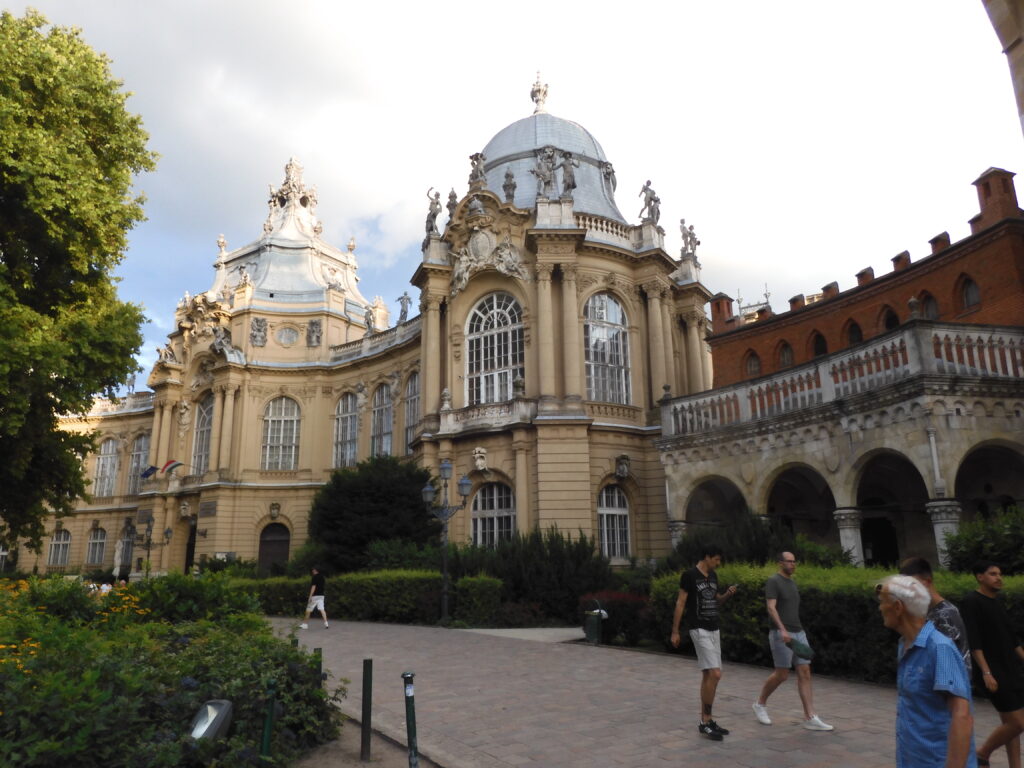
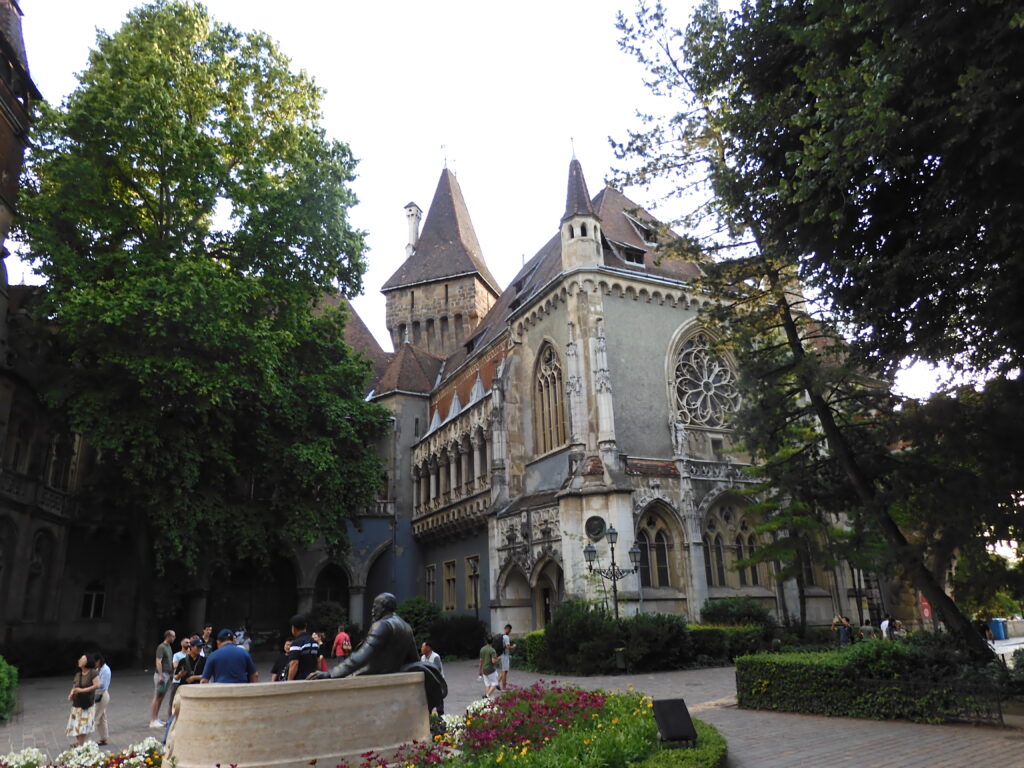

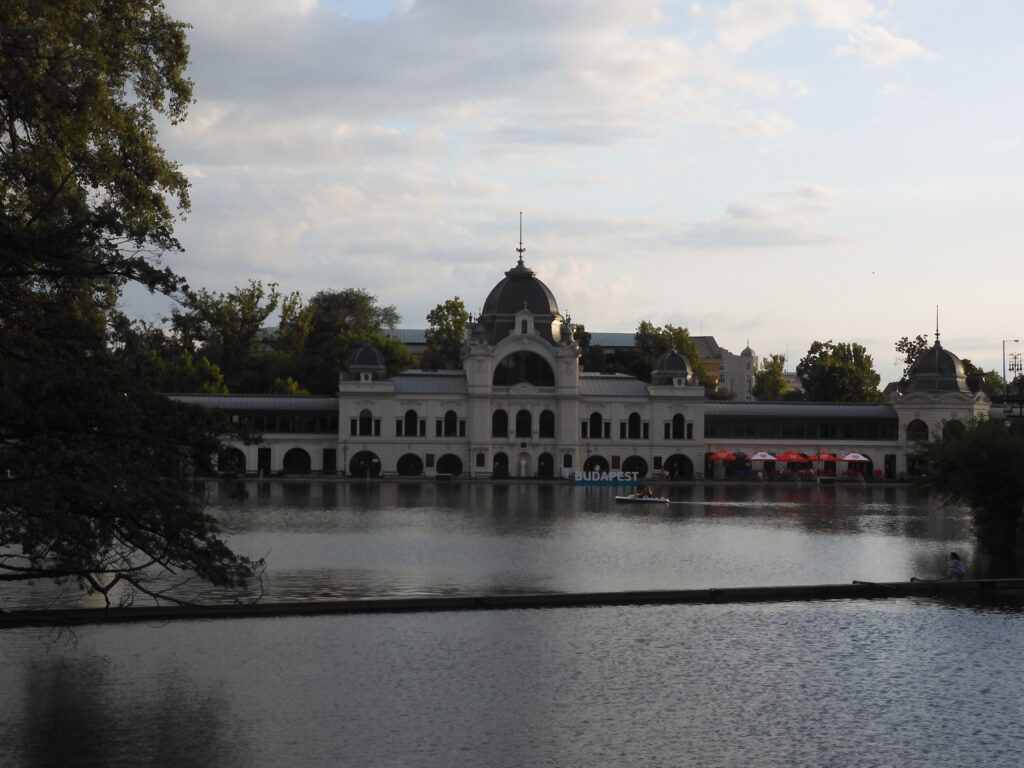
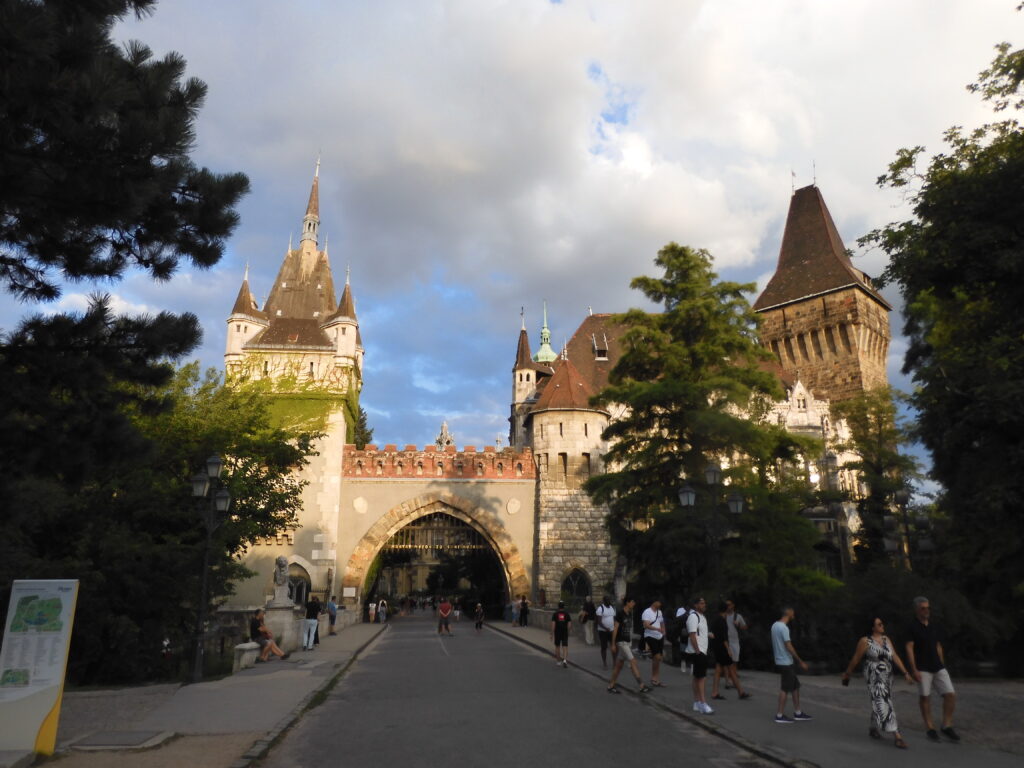
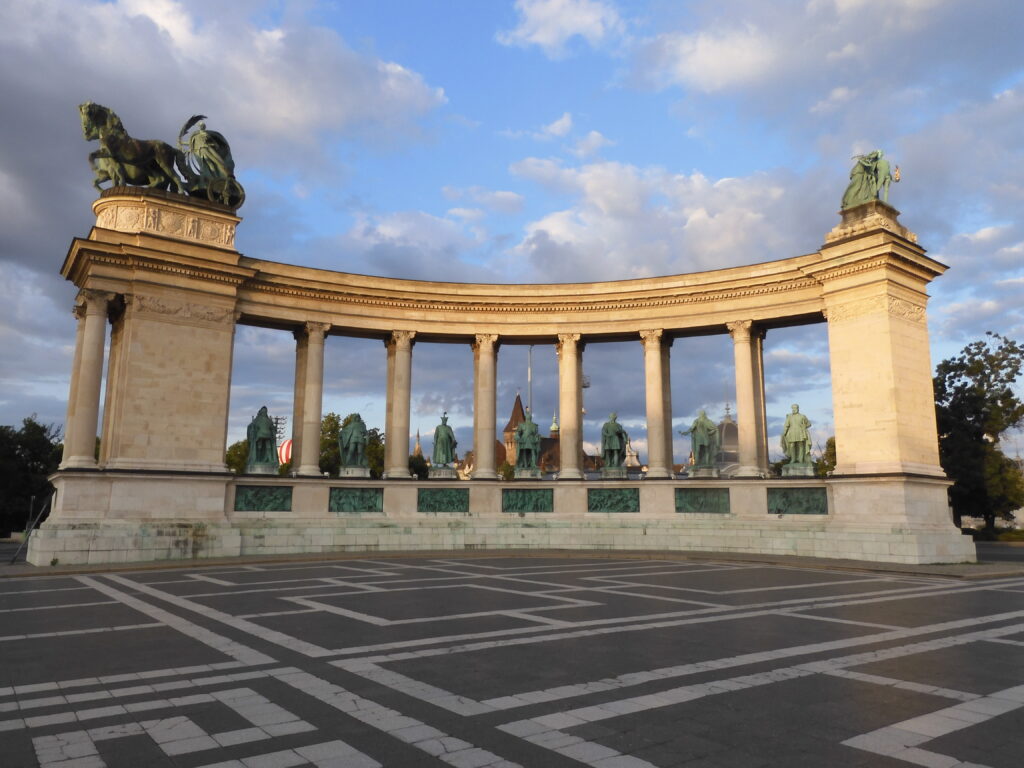
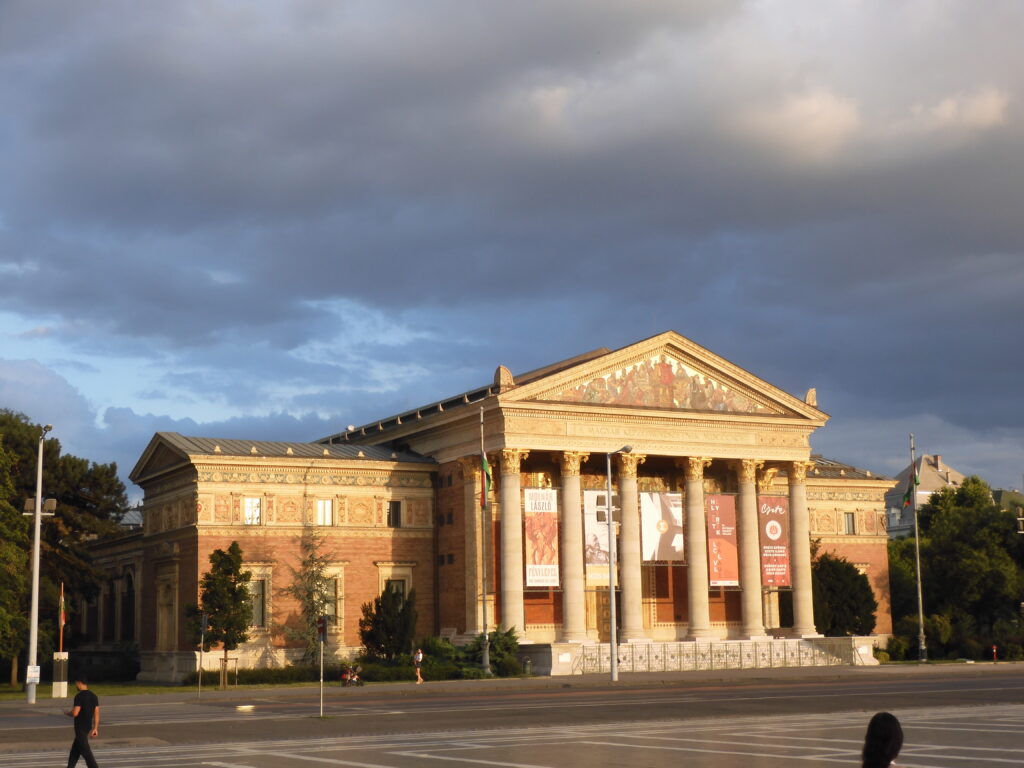

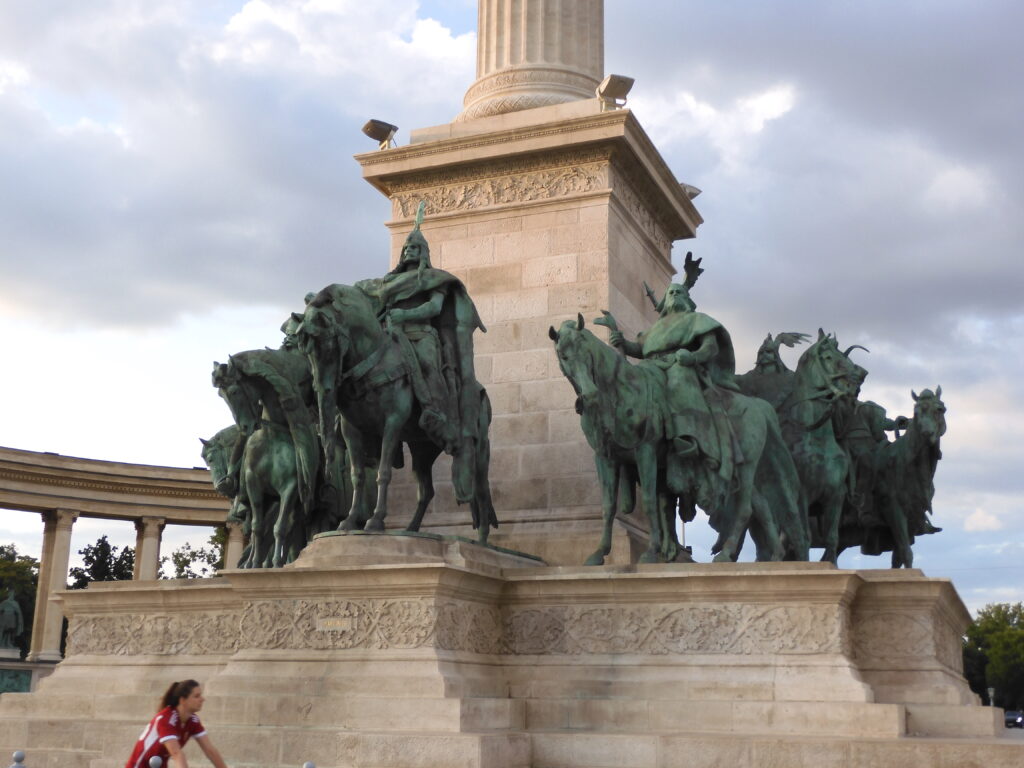
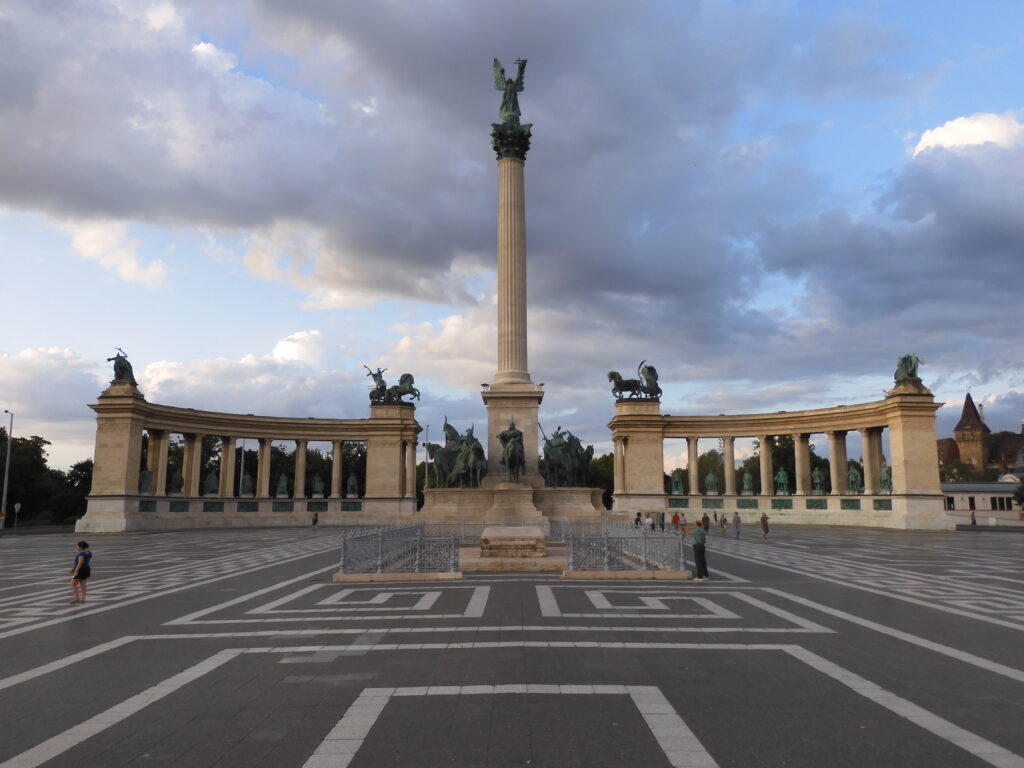
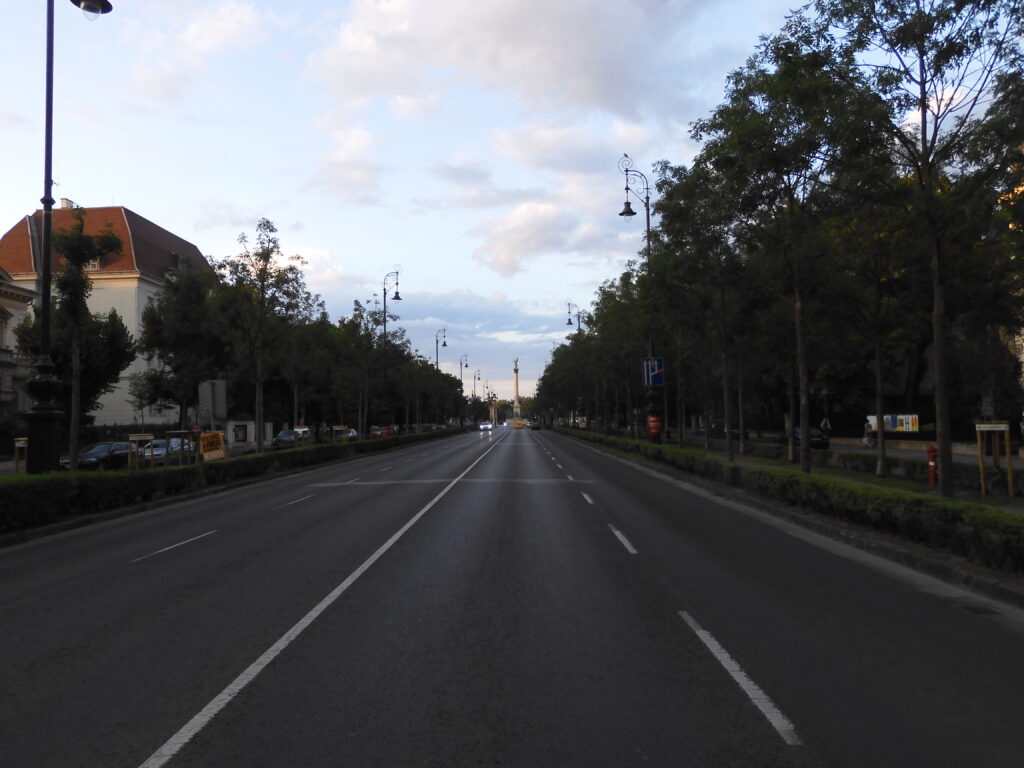
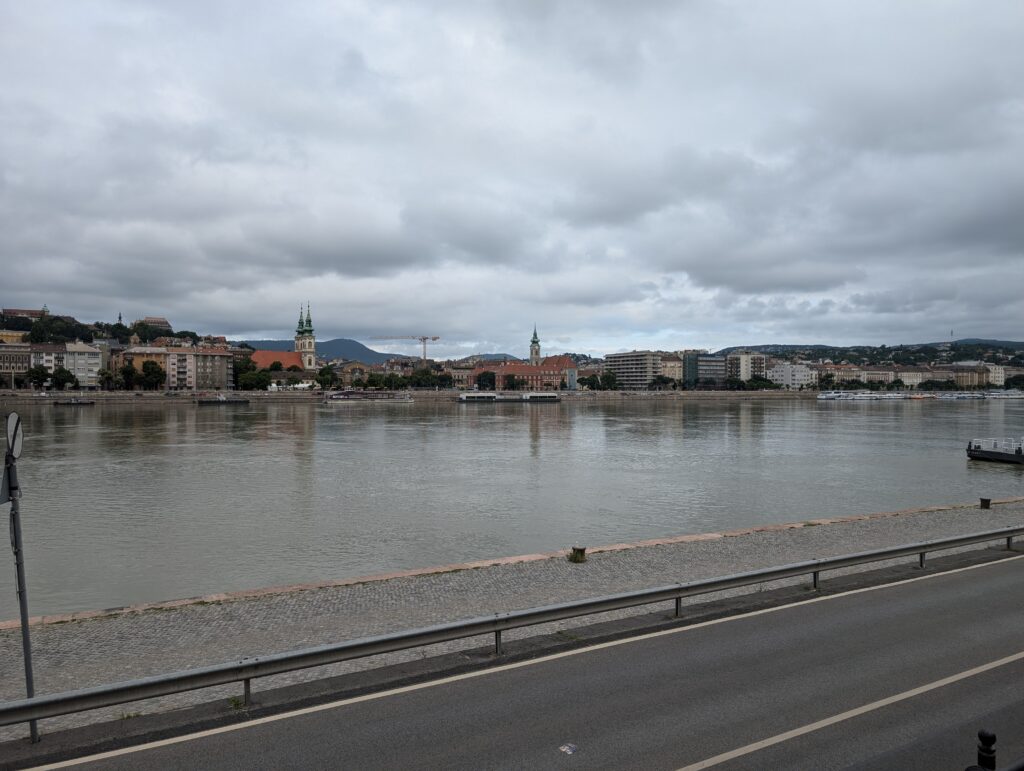
Caleb had been pretty patient with all the lost wallet stuff, and he had been begging me to either take him swimming someplace or get a room with a pool for quite a while. I figured if we could manage to find a thermal bath with some other water facilities alongside, I might be able to kill two birds with one stone. We headed to Margaret Island, which is a destination itself. It has a zoo, a musical fountain, more music venues, ruins of an actual medieval convent, an athletic club, an Olympic training center, an athletic club, and a five kilometer running path. It was a pretty fun place. The Palatinus Baths indeed had several pools of differing temperatures. We went to the cooler outside pool. There was one with a lazy river, one for swimming laps, one for little kids, and as I said, several of different temperatures, naturally heated by underground volcanic activity. There is also a pool with a MASSIVE set of water slides.
Caleb discovered the water slides by networking. I don’t know how we missed them, because they had a tower you had to climb to make the descents. We tried the orange one first. It had such an incline to it that you developed some serious speed in the descent. It would have been dangerous had it been an open chute instead of an enclosed tube. As it was, Caleb described it as a time travel wormhole. I have never been on a water slide with that much inertia. The yellow one was a straight shot down a decline almost as high. The blue was a long meandering chute with half a dozen lateral loops in it. The purple was reserved for groups going on specially designed inner tubes. We went on them all, and this turned out to be the highlight of the visit to Margaret Island. As happens at a lot of European tourist locations, the staff began taking measures to close the place about forty minutes before it actually closed. They wouldn’t let anyone else on the slides, so we went into the old Turkish hot bath. We had cooled down enough by this time that it felt good. We remained until they gave us the boot at about five minutes to 7:00. One more hearty Hungarian meal, and we were back in the room for a night’s rest.
I figured Caleb might need to sleep, so I planned to go on a longer run the morning of our travel day. I ran over to Margaret Island. I ran the entire five kilometer track around the island perimeter. I ran back to the room. All told, I ran seven miles, then walked another to cool down. I took a shower, got all of my things together and Caleb still wasn’t up! By the time he woke, gathered his things, and ate breakfast, it was close to noon. There was no point in trying to see anything new. We took the metro system over to Keleti Train Station and prepared for our overnight train. I burned through a few of my leftover Hungarian Forint buying some groceries to take on the train. It was very fortunate that I had stocked up!

